Rakesh Sharma
First indian in space.
By Google Arts & Culture
Illustrations by Roshan Gawand
Rakesh Sharma: The first Indian to go into space by Roshan Gawand
On April 3, 1984, when Rakesh Sharma flew the Soviet rocket Soyuz T-11, he made history. He became the first Indian citizen to reach space. Wing Commander Rakesh Sharma, (retired) was an Indian Air Force pilot on September 20, 1982 was chosen as a cosmonaut to be a part of the joint Indian Space Research Organization (ISRO) and the Soviet Interkosmos space program.
With Rakesh Sharma’s voyage, India became the 14th nation to send a person to outer space.
India 75 - Rakesh Sharma: The first Indian to go into space
On this journey to the space station Salyut 7, two Soviet cosmonauts, commander Yury Malyshev and flight engineer Gennady Strekalov accompanied him.
The Salyut crew had held a joint television news conference with the then Prime Minister Indira Gandhi and officials in Moscow. When Gandhi asked Rakesh how India looked from outer space, he said the iconic words, “ Saare Jahan Se Achha ” (tr. , the best in the world.) These are words from a popular patriotic poem that was written by poet and politician Muhammad Iqbal while India was still under British colonial rule.
Rakesh and the crew spent 7 days, 21 hours, and 40 minutes aboard Salyut 7. The crew conducted several experiments and technical studies, including 43 experimental sessions. Rakesh’s work majorly involved bio-medicine and remote sensing. One of the experiments he performed was testing the effect of yoga on the body in microgravity. He also photographed India from space, saving India two years of aerial photography to map the same area.
While in space, one of the most remarkable things Rakesh saw from space was India’s coastline. He said in an interview decades later that the country’s coastline was visible for about four minutes over 24 hours. After the completion of the mission, Rakesh and his crewmates landed in Kazakhstan on April 11. He was conferred with the honor of the Hero of the Soviet Union upon returning from space. India conferred its highest peacetime gallantry award, Ashok Chakra in 1985.
Born on January 13, 1949, in Patiala, Punjab, Rakesh Sharma had dreams of flying jets since his childhood. After graduating from the National Defence Academy, he joined the Indian Air Force in 1970 at the age of 21. He began his career flying supersonic jet fighters. In 1971, during the Bangladesh Liberation War, he flew 21 missions in a MiG-21 fighter jet.
All before the age of 23. When the time finally came to travel to space, he was 35. "I had pretty much done it all before I went into space. So when the opportunity came, I went along. It was that simple" . With this travel, he became the 128th human to travel to space.
In 1984, when Rakesh was launched into space, India did not have a space program let alone cosmonaut training facilities. For Rakesh, training to go to space was a challenge. As part of this training, he was to stay in a locked room with artificial lights for 72 hours at an aerospace facility in Bengaluru to check how he reacted to claustrophobia.
On completion of which he then went to Star City, a high-security cosmonaut-training facility, about 50 miles outside Moscow for the final phase of his training. Rakesh had to adapt not just to the freezing temperatures but also had to pick up Russian so he could communicate with this team. He was also put on a special 3,200-calorie diet and tested by Olympic trainers for strength, speed, and endurance.
An interesting fact about the pioneering astronaut is that he took with him some Indian food to space. The Defence Food Research Lab in Mysore packed some suji halwa (a dessert made with semolina), aloo chhole (chickpea and potato curry), and vegetable pulaov, which he shared with fellow astronauts.
The decorated Air Force officer retired from duty as a Wing Commander and joined Hindustan Aeronautics Limited in 1987. He was HAL’s chief test pilot, and retired in 2001.
The Indian government has recently allowed companies to build private space programs. In an interview, Rakesh said he would love to go back to space but this time as a tourist. Rakesh Sharma rewrote how many young Indians dreamed. Years later, inspired by him, another young Indian, Kalpana Chawla undertook a similar journey into the great unknown.

5 Royal Residences Around the Globe
Google arts & culture, 10 things you should know about portugal, one building, two perspectives, bending gravity at the guggenheim museum bilbao, was the chauvet-pont d'arc cave the first movie theater, exploring british identity through art, 10 tree-mendous arboreal artworks, the mystery of the mold cape, destination: solar system.

- Global Indian Exclusive
- Indian Heroes
Saare Jahan Se Achha: Space pioneer Rakesh Sharma’s story evokes national pride
Written by: amrita priya.
(September 4, 2023 ) “I think I was born a little early because I’m already 75 and the remarkable era of space exploration programmes begins now but as an Indian, I join my hands and congratulate ISRO for the great success,” said cosmonaut Rakesh Sharma, on the success of Chandrayaan-3 mission while speaking to National Geographic.
Whenever people talk about important milestones in India’s space exploration, the name of Rakesh Sharma is bound to come up. It’s a name that no well-informed Indian can ever forget.
Though many Indian-origin people have gone to space; in the population of 1.4 billion people, Rakesh Sharma remains the first and the only Indian citizen so far to have achieved this feat.
The conversation between astronaut Rakesh Sharma and the then Prime Minister Indira Gandhi while he was in space is still widely remembered. His response, ‘Saare Jahan Se Achha’ (better than the entire world), when she asked how India looked from space, became a source of pride for the entire country. This interaction contributed to Rakesh Sharma’s status as a national hero.

Rakesh Sharma
From space the world seems borderless
“When you go into the space, the first thing you do when you look out from the window is to look for your country. You say, ‘yes, it’s quite like what the Geography books have said’. After seeing it over and over again when you shift your focus, you look at the neighbouring countries and then you start realising from up there that boundaries are not visible – that they are man-made, and then you start developing that global outlook,” Rakesh Sharma told children when he visited one of the schools.
When you have the tricolour on your arms, your performance goes beyond your potential. It’s like having a purpose higher than yourself, and when you have that purpose, things become a lot easier. Rakesh Sharma remarked
The trailblazer’s story
In January 1982, a decision was made that an Indian would go to space on a Soviet spacecraft. It was a joint mission of ISRO and the Soviet Interkosmos Space Programme.
This big decision inspired Squadron Leader Rakesh Sharma to volunteer for this tough mission. After a very careful selection process, including a thorough medical test, he was chosen as one of the two candidates to become astronauts from a group of 150 highly qualified Indian Air Force pilots.
Once he was selected, Sharma went through extensive astronaut training at the Yuri Gagarin Centre in the USSR. During this time, he showed strong dedication and commitment, which impressed the experts of the Soviet Space Programme. The Squadron Leader successfully finished a very tough training programme, standing out for his exceptional professionalism and great performance.
Then, on April 3rd, 1984, he scripted history by becoming the first Indian to complete a space mission in orbit. Throughout the joint Indo-Soviet Space Mission, he did all the planned scientific experiments and other tasks really well, showing impressive skill and excellence. Through his achievements, Rakesh Sharma not only earned his place among respected space pioneers but also brought a lot of honour and pride to the country.

Rakesh Sharm with his team members Yury Malyshev and Gennadi Strekalov
It takes your breath away…
Right from his childhood Rakesh Sharma was captivated with the news of space. He followed every development related to space and the lives of the astronauts, oblivious of what the future beholds for him.
“There were no television sets then but our generation closely followed each and every information that they came across in the print media to know all about the astronaut training and experiences in space,” he told the school children.
I was the 128 th guy in the world to go to space. By that time, there was already a lot of information available in the print, audio and visual media. So, I was pretty much prepared for what to expect but still, it takes your breath away when you go up there. Rakesh Sharma shared
Sharma’s space odyssey
The first Indian citizen to travel into space accomplished the historic feat by embarking on a journey aboard the Soviet rocket Soyuz T-11, which was launched from the Baikonur Cosmodrome in the Kazakh Soviet Socialist Republic on April 3, 1984. The spacecraft carried a crew that included Sharma, the ship’s commander Yury Malyshev, and flight engineer Gennadi Strekalov to the Salyut 7 Orbital Station.
During his time aboard the Salyut 7, which lasted for 7 days, 21 hours, and 40 minutes, Sharma and his team conducted a range of scientific and technical studies. These encompassed 43 experimental sessions, with a primary focus on fields like bio-medicine and remote sensing.
In their celestial voyage, they captured mesmerising views of space in the absence of gravity.
The crew held joint television news conferences from space, connecting with officials in Moscow and India’s Prime Minister at the time, Indira Gandhi. This mission made India the 14th nation to achieve the remarkable milestone of sending a human into outer space.
All praise for ISRO
“ISRO was working on a very carefully crafted plan of the luminaries like Vikram Sarabhai who envisioned that all our efforts on space must have a socio-economic focus and everything must trickle down to the common man,” he said.
Speaking highly of ISRO, Sharma remarked, “It has never competed with any other nation, and has received spectacular success.”
Yoga and music in space
“One problem with space flight is that people can become less productive because of space sickness in the environment of zero gravity,” Rakesh Sharma mentioned.
While aboard, his other two Russian crew members followed their own training profile to address the space sickness issue but Rakesh Sharma had strong belief in Yoga.
“Two-three months before the launch of our space programme, I had stopped training as per their profile. I did only yoga. It was my way to check whether yoga would prove to be helpful in addressing the space sickness problem,” he remarked. “The other two were experienced cosmonauts so they adjusted pretty well to zero gravity and I being the first timer did not face any problem either,” added the Global Indian .
The crew was allowed to take one kilogram of personal stuff in space. The Russian astronauts carried a guitar while Sharma carried a cassette player and a cassette of his favourite music.
A naughty child
Rakesh Sharma was born on January 13, 1949, in Patiala, Punjab. Growing up in a modest household he had an affinity for flying from a young age.
He was a naughty child who often got punished by his teachers who made him stand at the back of the class.
After completing his schooling from St. George Grammar School, Hyderabad, and graduation from Nizam College, he joined the National Defence Academy (NDA) as an air force plebe. Subsequently he joined the Indian Air Force as a test pilot in 1970. Sharma was only 21 then.
Maths was never my favourite subject – English literature, English language and biology was. But during my test pilot training I did a master’s level aeronautical science course with mathematics as an important subject. Maths was coming out of my ears but I did manage to finish that course. Sharma said in an interaction with children evoking laughter.
Difficulty in getting parents’ consent
Rakesh Sharma’s father worked for Punjab National Bank and later switched to state government service. His mother was an educationist. “I had difficulty in getting consent from my parents to allow me to fly fighter aircraft because we didn’t have any other family members in the air force except for a cousin of mine who had died in an air crash two months after he was commissioned,” he shared.
But looking at how adamant he was to join the Airforce, Sharma’s parents gave in. However, his mother set a condition. “I want you to promise that you will be very good at what you are choosing because that will keep you ahead of the game, and that’s the only way you will be safe,” she said.

Sharma’s dedication and skill earned him the opportunity to fly various aircrafts. While serving as a military pilot, he participated in dangerous combat missions on board a MiG-21 aircraft during the 1971 Bangladesh War.
From fighter pilot to astronaut
Progressing through numerous levels, Sharma was promoted to the rank of squadron leader in the IAF.
It was his exceptional performance as a pilot that caught the attention of the authorities when the Indian Space Research Organisation (ISRO) sought to send an Indian into space. In 1982, Rakesh Sharma was chosen for this historic mission.
If it hadn’t been for my career as a fighter pilot, I wouldn’t have gone to space. If I were to live my life again I would again try to become a fighter pilot. It still remains an interesting job with new verticals like automation and artificial intelligence added to it now. Rakesh Sharma remarked
Awards and honours
After his return from space, Sharma was conferred the prestigious title of the Hero of the Soviet Union. He continues to hold the unique distinction of being the sole Indian recipient of this honour.
In India, Sharma and his two Soviet mission companions, Malyshev and Strekalov were honoured with the highest peacetime gallantry award, the ‘Ashoka Chakra’.
Life after retirement
After retiring as a wing commander of the Indian Air Force, Sharma joined Hindustan Aeronautics Limited (HAL) in 1987, assuming the role of chief test pilot at the HAL Nashik Division. In 1992 he moved on to HAL’s Bangalore division. In 2001, his flying career came to an end.
Immediately after that, Sharma held the position of non-executive chairman at Cadila Labs, a company based in Bengaluru that specialises in innovative automation solutions. He also played a significant role in ISRO’s Gaganyaan National Advisory Council, supervising the astronaut selection programme.
Sharma has been leading a life full of tranquillity in the quietude of Coonoor in Tamil Nadu with his wife, Madhu. They savour the pleasures of golfing, gardening, yoga, reading, watching films and listening to music which ranges from Hindustani classical, to western and Sufi numbers.

Rakesh Sharma during an interaction session with students
Inspiration for all
Rakesh Sharma has extensively travelled across schools and colleges of India sharing his first-hand experience of being in space with youngsters.
Sharma’s impact reverberates through the pages of history books and India’s journey among the stars. He continues to symbolise boundless exploration of space and the aspirations of humanity.
Looks like Mahendra singh Dhoni . both are great Indians.
- 1971 Bangladesh War
- Ashoka Chakra
- Astronaut Rakesh Sharma
- Baikonur Cosmodrome
- Cadila Labs
- celestial voyage
- Chandrayaan-3
- Cosmonaut Rakesh Sharma
- Gennadi Strekalov
- Global_Indian_Official
- GlobalIndian
- GlobalIndians
- Hero of the Soviet Union
- Hindustan Aeronautics Limited (HAL
- IndiaAtGlobalMap
- Indian Air Force
- IndiansAbroad
- IndiansOverseas
- Indo-Soviet Space Mission
- ISRO's National Advisory Council for Gaganyaan
- MiG-21 aircraft
- National Defence Academy (NDA)
- Nizam College
- nterkosmos Space Programme
- peacetime gallantry award
- Rajesh Sharma
- Saare Jahan Se Achha
- Salyut 7 Orbital Station
- Soyuz T-11 spacecraft
- space exploration
- space exploration programmes
- Squadron Leader Rakesh Sharma
- St. George Grammar School
- Television news conference from space
- TheGlobalIndian
- TheGlobalIndians
- Vikram Sarabhai
- Yoga in Space
- Yoga in Spacecraft
- Yuri Gagarin Centre
- Yury Malyshev

Flying high: Astronaut Raja Chari is reaching for the stars
Reading Time: 6 mins

Sirisha Bandla: The second Indian-origin woman to fly to space
Reading Time: 10 mins

The Astronaut Maker: Dr. Ravi Margasahayam, the man who sent over 700 humans into space
Reading Time: 8 mins
- Neil Armstrong
Women in Space
- Space Rocket
- Spaceplanes
- NASA Space Shuttle
- Space Launch System
- Dream Chaser
- Aurora Pictures
Best Space Pictures
- Earth Pictures
- Spacecraft Pictures
- Space Shuttle Pictures
- The Planet Mercury
- Planet Venus
- Planet Earth
- Planet Mars – the Red Planet
- The Planet Jupiter
- The Planet Saturn
- The Planet Uranus
- The Planet Neptune
- Dwarf Planet Pluto
- Moons of the Solar System
- Boeing CST-100
- Dragon Spacecraft
- New Space Book Releases
- Space Clothes
- Astronomy Software
- Space Magazine
- Space Calendar

- Space History
Rakesh Sharma – First Indian in Space
Rakesh Sharma was the first Indian to travel in Space. He was born on 13th January 1949 in Punjab, India. He flew to the Salyut 7 Space Station.

Rakesh Sharma was born on 13th January 1949 in Punjab, India.
Rakesh completed his early education at St. Goerge’s Grammer School, Hyderabad, India.
Later In 1966, Rakesh joined as an Air Force Cadet in NDA.
In 1970, Rakesh was appointed as Pilot Officer in the Indian Air Force.
Born On: January 13th, 1949 Born In: Patiala in India Career: Test Pilot and Cosmonaut
Timeline 1949: Rakesh Sharma was born in Patalia into a Punjabi family. 1966: He joined the National Defense Academy as an Air Force trainee. 1970: Appointed as a test pilot by Indian Air Force. 1971: Rakesh Sharma flew the Mikoyan-Gurevich, a Russian jet. 1984: He was a part of a space mission owing to which he became the first man to travel to space. 2006: He took part in a space conference held by ISRO.
India sent its first astronaut, Rakesh Sharma, aboard Soviet spacecraft Salyut 7 in April 1984.
Rakesh Sharma was born on January 13, 1949 in Patiala, Punjab, India.
Rakesh studied at St. George’s Grammar School, Hyderabad, India.
In 1966, Rakesh Joined As An Air Force Cadet in NDA. In 1970, Rakesh Was Appointed As Pilot Officer In The Indian Air Force.
Sharma joined the Indian Air Force in 1970 as a pilot officer after joining the NDA as an IAF cadet in 1966.
He joined the National Defense Academy (NDA) as an Air Force cadet in July 1966.
In 1970 he was commissioned into the Indian Air Force to become a pilot.
Sharma joined the Indian Air Force and progressed rapidly through the ranks.
In the 1971 War, Sharma flew missions is MiG aircraft with considerable success.
A few years later he retired from the Indian Army as a Wing Commander to become a part of Hindustan Aeronautics Limited (HAL) as a test pilot. He was posted in the Nashik Division. He then shifted to National Flight Test Center (NFTC) in Bangalore and began to work on Light Combat Aircraft program, along with a few others.
In 1970, after joining the Indian Air Force as a test pilot, his passion for flying opened up several opportunities such as being a part of war operations against Pakistan. He flew various Mikoyan-Gurevich aircrafts starting from 1971. Rakesh swiftly progressed through many levels and in 1984 he was appointed as the Squadron Leader and pilot of the Indian Air Force.
He was a squadron leader with the Indian Air Force, when he flew into space in 1984 as part of a joint programme between the Indian Space Research Organisation (ISRO) and the Soviet Intercosmos space program.
Sharma, then a Squadron Leader and pilot with the Indian Air Force embarked on a historic mission in 1984 as part of a joint space program between the Indian Space Research Organisation and the Soviet Intercosmos space program, and spent eight days in space aboard the Salyut 7 space station.
Space Mission
He spent eight days in space on board the Salyut 7 space station (Soviet/Russian). He joined two other Soviet cosmonauts aboard the Soyuz T-11 spacecraft which blasted off on April 2, 1984.
Rakesh Sharma was chosen out of hundreds of applicants to undergo training with the Russians as part of their space programme.
He was selected on 20th September 1982 to become a cosmonaut and was trained for 18 months for the eight-day trip. In 1984 he became the first Indian citizen to go into space when he flew aboard the Russian rocket Soyuz T-11. The take-off from Baikonur in Moscow on April 2, 1984 was a high point in Indo-Soviet relations. The Soyuz IT – 11 docked and transferred the three-member Soviet-Indian international crew which also included the Ship’s Commander Y.V. Malyshev and Flight Engineer G.M. Strekalov (USSR) to the SALYUT-7 Orbital Station. The crew spent seven days aboard the Salyut Space Station during which they conducted scientific and technical studies, which included 43 experimental sessions.
The one thing that cosmonauts are trained the most is to cope with is zero gravity. For example, Sharma, who recently gave a lecture in Bangalore on the kind of training that is given to astronauts, recalled that they were all made to sleep with their heads lower than their feet. Sharma says that six months before the launch, he dropped the fitness regime that the other cosmonauts were following and did intensive yoga. This was to assess whether yoga helps people cope better with the lack of gravity. His work was mainly in the flelds of biomedicine and remote sensing.
He was launched with 2 cosmonauts _________________ along with two Soviet cosmonauts aboard Soyuz T-11 on the 3 April 1984. Sharma was 35-year-old. at the time. Rakesh along with the Soviet Cosmonauts spend 7 days, 21 hours and 40 minutes (Appx. Eight days) in space and board the Salyut 7 space station, a low earth orbit space station, conducting an earth observation programme concentrating on India. He also did life sciences and materials processing experiments, including silicium fusing tests. He is also reported to have experimented with practicing Yoga to deal with the effects of prolonged orbital spaceflight.
While Rakesh was in space, he was asked by the then Prime Minister Indira Gandhi on a famous conversation, who asked him how does India look from space, Rakesh replied “Saare Jahan se Achcha Hindustan Hamara” meaning ‘Our land of Hindustan, is the Best in the world’.
Rakesh Sharma immortalised himself in Indian History and made his way into many Indians hearts by his answer to the then PM Indira Gandhiji’s question on how India looked from outer space. He replied “Saare Jahan Se Achha” (The Best in the World). That was also a proud moment for millions of Indian TV viewers who watched India become the 14th nation to send a man to outer space.
He was conferred with the honour of Hero of Soviet Union upon his return from space. The Government of India conferred its highest gallantry award (during peace time), the Ashoka Chakra on him and the other two Soviet members of his mission.
He retired with the rank of Wing Commander. He joined the Hindustan Aeronautics Limited in 1987 and served as Chief Test Pilot in the HAL Nashik Division until 1992, before moving on to Bangalore to work as the Chief Test Pilot of HAL. He retired from test flying in 2001.
In 2006, Sharma took part in a conference involving a gathering of the best scientists of ISRO, who were responsible for one of India’s space missions. Currently, he has retired from his services and is now the chairperson for the Automated Workflow.
Did you know?
* India in Space : has information, facts on Indian space programme.
* India’s space agency may launch its first indian astronaut in the next few years.
* Astronaut Kalpana Chawla was killed along with six others in the Space Shuttle Columbia Disaster in February 2003.
The Japanese and Indian Space Programmes: Two Roads into Space by Brian Harvey from Amazon.com and Amazon.co.uk .
Rakesh Sharma Links
- Rakesh Sharma Biography – Rakesh Sharma Profile, Childhood, Life, Timeline
- Rakesh Sharma – Biographies, Biography, India, Business, Legends
Any comments on the Rakesh Sharma page, click on Contact Info .
Share this:
- Click to share on Twitter (Opens in new window)
- Click to share on Facebook (Opens in new window)
- Click to share on Pinterest (Opens in new window)
- Click to share on Reddit (Opens in new window)
- Click to share on Tumblr (Opens in new window)
EDITOR PICKS
Blue origin, kitten space vehicle, popular posts, popular category.
- Spacecraft 51
- Launch Vehicles 31
- Solar System 23
- Space History 15
- Spaceplanes 15
- Space Rocket 13
- Space Shop 12
- Space Pictures 11
- Space Shuttle Archives 10
- Advertisement
- Contact Info
You must be logged in to post a comment.
34 years ago, Rakesh Sharma became the only Indian to travel to space
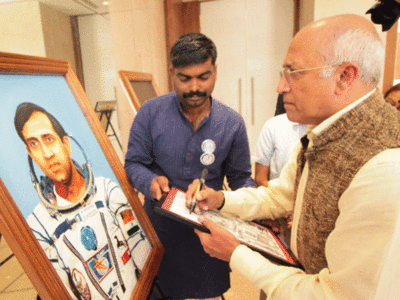
Visual Stories
Subscribe Now! Get features like

- Latest News
- Entertainment
- Real Estate
- MI vs SRH Live Score
- Lok Sabha Election 2024
- Election Schedule 2024
- MI vs SRH Live
- IPL 2024 Schedule
- IPL Points Table
- IPL Purple Cap
- IPL Orange Cap
- The Interview
- Web Stories
- Virat Kohli
- Mumbai News
- Bengaluru News
- Daily Digest

Rakesh Sharma: First Indian to conquer space
The first indian and the 138th person to travel in space, this cosmonaut spent eight days in the salyut 7 space station in april 1984. he retired from the indian air force as a wing commander. his feat made india the 14th nation to send a man to outer space..
Born on January 13, 1949 in Patiala, Punjab, Rakesh Sharma attended St. George’s Grammar School, Hyderabad and graduated from Nizam College, Hyderabad. He was admitted to the National Defence Academy (NDA) at Khadakvasla, Pune, in July 1966 and became a commissioned officer in the Indian Air Force (IAF) in 1970.

Having joined the IAF as a test pilot, Rakesh Sharma flew 21 combat missions in a MiG-21 during the 1971 Bangladesh war. He went on to fly a wide range of aircraft and on September 20, 1982 was chosen to become a cosmonaut as part of a joint initiative that involved the space research bodies Interkosmos, representing the Soviet Union as well as the Indian Space Research Organisation.
Destination space
He along with a large number of fellow candidates went through many tests first at the Institute of Aerospace Medicine in Bangalore and then to Moscow. The large batch was gradually reduced to a shortlist of four candidates, before a final round of medical tests left just two candidates – Rakesh Sharma and Ravish Malhotra – both of them being IAF pilots. It was made clear at the outset that even though only one of them would finally make the grade for the space odyssey, the other one would be a standby for any eventuality. However, the identity of who exactly would be the lucky one would be taken only towards the last stage before the actual space flight.
Tough training regime
AS part of the rigorous training they underwent for nearly two years at the Yuri Gagarin Cosmonaut Training Center at Star City in the outskirts of Moscow, the duo of Sharma and Malhotra were even locked inside a closed room at an IAF facility in Bangalore for 72 hours to detect if they suffered from claustrophobia. Sharma performed yoga for 10 minutes daily to maintain better fitness in space, as well as zero gravity yoga to combat space sickness. On April 2, 1984, Sharma become the first Indian to go into space when he flew aboard the Soviet rocket Soyuz T-11 that was launched from the Baikonur Cosmodrome in the Kazakh Soviet Socialist Republic. The rocket docked and transferred the three member Soviet-Indian international crew which included the spaceship commander Yury Malyshev and flight engineer Gennadi Strekalov, to the Salyut 7 Orbital Station. Over the years, he rose up the ranks and, in 1984, was appointed squadron leader in the IAF. He retired as wing commander and, in 1987, joined the Hindustan Aeronautics Limited (HAL) wherein he was the chief test pilot at the HAL Nashik and Bangalore divisions, respectively, until 1992. He was also associated with the project involving the Light Combat Aircraft Tejas.
Achievements, awards
The honour Hero of the Soviet Union was conferred upon Sharma on his return from space, making him the lone Indian recipient. India’s highest peacetime gallantry award, the Ashoka Chakra, was also conferred on him.
Personal life
Sharma with his wife Madhu has a son, Kapil who is a film director, and a daughter Kritika, who is a media artist.
INTERESTING FACTS
1. Sharma spent 7 days, 21 hours and 40 minutes aboard the Salyut 7 space station. He photographed India from space and the photos he took saved India two years of aerial photography to map the same area. The mission conducted scientific and technical studies, including 43 experimental sessions, but his work involved bio-medicine and remote sensing. He also observed a fire in Burma (Myanmar).
2. The crew held a television conference with Moscow officials and then Prime Minister, Indira Gandhi. She asked him how India looked from space, Sharma replied, ‘Saare Jahan Se Achcha’.
3. Sharma’s Russian companions aboard enjoyed Indian food in space. The dishes were prepared by the Defence Food Research Laboratory, Mysore which included Pulao, Alu chholey and Sooji halwa.
4. Sharma carried with him portraits of the then Prime Minister, Indira Gandhi, President Zail Singh, defence minister, Venkataraman and soil from Rajghat, Mahatma Gandhi’s samadhi.
Source: Wikipedia, gallantryawards.gov.in and britannica.com
- Rakesh Sharma
- Indian Air Force
Join Hindustan Times
Create free account and unlock exciting features like.

- Terms of use
- Privacy policy
- Weather Today
- HT Newsletters
- Subscription
- Print Ad Rates
- Code of Ethics
- IPL Live Score
- T20 World Cup Schedule
- IPL 2024 Auctions
- T20 World Cup 2024
- Cricket Teams
- Cricket Players
- ICC Rankings
- Cricket Schedule
- T20 World Cup Points Table
- Other Cities
- Income Tax Calculator
- Budget 2024
- Petrol Prices
- Diesel Prices
- Silver Rate
- Relationships
- Art and Culture
- Taylor Swift: A Primer
- Telugu Cinema
- Tamil Cinema
- Board Exams
- Exam Results
- Competitive Exams
- BBA Colleges
- Engineering Colleges
- Medical Colleges
- BCA Colleges
- Medical Exams
- Engineering Exams
- Horoscope 2024
- Festive Calendar 2024
- Compatibility Calculator
- The Economist Articles
- Lok Sabha States
- Lok Sabha Parties
- Lok Sabha Candidates
- Explainer Video
- On The Record
- Vikram Chandra Daily Wrap
- EPL 2023-24
- ISL 2023-24
- Asian Games 2023
- Public Health
- Economic Policy
- International Affairs
- Climate Change
- Gender Equality
- future tech
- Daily Sudoku
- Daily Crossword
- Daily Word Jumble
- HT Friday Finance
- Explore Hindustan Times
- Privacy Policy
- Terms of Use
- Subscription - Terms of Use
Sky is not the limit: Indian astronauts who made us proud
Apr 12, 2023
International Space Flight Day
International Space Flight Day is observed on April 12 each year to celebrate the historic achievement of humans venturing into space. On the same day in 1961, Russian cosmonaut Yuri Gagarin became the first human to journey into space. Here are Indian astronauts who were a part of space expeditions.
Credit: Wikipedia
Rakesh Sharma
Rakesh Sharma, a former Indian Air Force pilot and astronaut, is the first Indian citizen to travel to space. In 1984, he flew aboard the Soviet spacecraft Soyuz T-11 as part of an intercosmic flight programme between the Soviet Union and India.
Credit: BCCL
One step, giant leap
During his eight-day stay on the Salyut 7 space station, Sharma conducted scientific experiments and communicated with the former PM Indira Gandhi. He uttered the historic words – “Sare jahan se accha (the best in the world),” answering her question on how India looked from up there.
Kalpana Chawla
Chawla was the first woman of Indian-origin to travel to space. She was born in Haryana, India and moved to the United States in 1982 to pursue aerospace engineering.
An inspiration for many
In 1995, she became a member of NASA and went on her first space mission in 1997. She was also a crew member on the STS-107 mission in 2003, which ended tragically when the spacecraft Columbia disintegrated upon re-entry, resulting in the loss of all seven crew members, including Chawla.
Sunita Williams
Sunita Williams is a famous American astronaut of Indian descent. She has made significant contributions to space exploration, and accomplished several feats during her career as an astronaut.
Credit: NASA
Maximum number of days spent in space by an Indian
She has flown on two space missions and has spent a total of 322 days in space. During the time, she set several records, including the record for the longest spaceflight by a woman and the most spacewalks by a woman.
Sirisha Bandla
Sirisha Bandla, an astronaut and aeronautical engineer of Indian descent, is employed at Virgin Galactic. She was born in Andhra Pradesh, India, and grew up in Houston, Texas.
Credit: Twitter
Third Indian-origin woman to fly into space
Sirisha was part of the crew of Virgin Galactic's Unity 22 mission and flew into space in July 2021, becoming the third Indian-origin woman to do so after Chawla and Williams.
Credit: LinkedIn
Dr Swati Mohan
Though she has not gone into space, Dr Swati Mohan, an Indian-American aerospace engineer and scientist, was the lead guidance and controls operations engineer for NASA's Mars 2020 mission in February 2021, ensuring the successful landing of the spacecraft on the Martian surface.
Living her dream
Mohan got interested in space after watching Star Trek at the age of nine and later decided to switch from their original plan of becoming a pediatrician. She got her master's degree and PhD in aeronautics and astronautics at MIT.
Sensex drops 45 points in highly volatile trade
Read More Here
Kalpana Chawla: Biography & Columbia disaster
Astronaut Kalpana Chawla was the first Indian-born woman in space.

- Astronaut career
- Columbia disaster
Chawla's legacy
Kalpana Chawla became the first Indian-born woman to go to space in 1997. Six years later, on February 1, 2003, Chawla died when the space shuttle Columbia broke up on re-entry into Earth's atmosphere, killing all seven astronauts on board.
Chawla's legacy has lived on, however. In particular, her talent and hard work have inspired young people in India and around Earth to consider careers in spaceflight.
Born in Karnal, India, on March 17, 1962, to parents Banarasi Lal Chawla and Sanjyothi Chawla, Kalpana Chawla was the youngest of four children.
Until she started school, Chawla hadn't been formally named. Her parents called her Montu, but Chawla picked her own name from a selection when she entered education. The name Kalpana means "idea" or "imagination." Her full name is pronounced CULL-pah-na CHAU-la , though she often went by the nickname K.C.
As a child, Chawla developed an interest in flying after first seeing a plane at around the age of three. She spent days with her father visiting her local flying club with her father and showed an interest in aviation while at school.
Related : Columbia Disaster: What happened and what NASA learned
During her earlier education in India, Chawla attended Tagore Baal Niketan Senior Secondary School, Karnal.
Chawla obtained a degree in aeronautical engineering from Punjab Engineering College. When selecting the course, professors tried to dissuade her, as there were limited opportunities for girls in India following this career path. However, Chawla was adamant that this was the subject for her.
After completing her engineering degree in India, Chawla immigrated to the United States in the 1980s and became a naturalized citizen to continue her studies. She obtained her masters degree from the University of Texas and earned a doctorate in aerospace engineering from the University of Colorado in 1988.
Chawla began working at NASA's Ames Research Center the same year, working on powered-lift computational fluid dynamics. In particular, her work focused on understanding how air flows around an aircraft during flight and incorporating computers into the work.
Becoming an astronaut
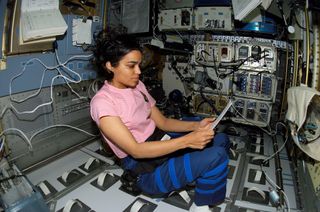
In 1994, Chawla was selected as an astronaut candidate. After a year of training, she became a crew representative for the Astronaut Office EVA/Robotics and Computer Branches, where she worked with Robotic Situational Awareness Displays and tested software for the space shuttles.
Chawla felt passionately about providing science education opportunities for young girls in India, and during her time as an astronaut, NASA invited Chawla's secondary school to take part in their Summer Space Experience Program. Each year from 1998, the school sent two girls to the Foundation for International Space Education's United Space School in Houston and Chawla would invite them into her home for an Indian dinner.
Chawla's first flight came in November 1997, aboard the space shuttle Columbia on flight STS-87 . The shuttle made 252 orbits of the Earth in just over two weeks. Chawla was a mission specialist and prime robotic arm operator for the flight; the other astronauts on board were Kevin Kregel, Steven Linsey, Winston Scott, Takao Doi and Leonid Kadenyuk.
The shuttle carried a number of experiments, including projects studying plant reproduction in microgravity and how materials behave in space.
In addition, Chawla used the robotic arm to deploy a satellite called SPARTAN 201, which was meant to study the outer layer of the sun , called the corona. However, the satellite malfunctioned and could not control its position upon deployment, according to NASA . Two other astronauts from the mission had to perform a spacewalk to recapture the satellite and the instrument never conducted any research.
After her first flight, Chawla said, "When you look at the stars and the galaxy, you feel that you are not just from any particular piece of land, but from the solar system."
The Columbia disaster
In 2000, Chawla was selected for her second voyage into space, to serve as a mission specialist on STS-107 . The mission was delayed several times before finally launching on Jan. 16, 2003.
During the 16-day flight, the crew completed more than 80 experiments, working a strenuous shift schedule to ensure that the research never stopped, according to NASA . Among other work, the STS-107 crew tested technology that NASA wanted to recycle water on the young International Space Station. Experiments developed by elementary school students from around the world analyzed how insects and fish respond to spaceflight; another suite of experiments studied the sun.
In particular, the flight carried a large pressurized chamber called the Spacehab research module inside the shuttle's payload bay. The experiments completed in the Spacehab module focused on biological and health sciences.
Between her two missions, Chawla logged 30 days, 14 hours, and 54 minutes in space.
On the morning of Feb. 1, 2003, the space shuttle returned to Earth, intending to land at Kennedy Space Center . But as the shuttle passed through Earth's atmosphere, hot gas streamed into the shuttle's wing where a briefcase-sized piece of insulation had broken off during launch and damaged the thermal protection system, the shield that protects it from heat during re-entry.

The unstable craft rolled and bucked, pitching the astronauts about. Less than a minute passed before the ship depressurized, killing the crew . Also on board were Rick Husband, Laurel Clark, Ilan Ramon, David Brown, William McCool and Michael Anderson.
The shuttle broke up over Texas and Louisiana before plunging into the ground. The accident was the second major disaster for the space shuttle program, following the 1986 explosion of the shuttle Challenger .
Related : Debris from space shuttle Columbia disaster found in Texas
NASA and independent groups both investigated the Columbia disaster in hopes of preventing another such tragedy. Examples include the Columbia Accident Investigation Board (2003) and NASA's Columbia Crew Survival Investigation Report (released in 2008).
Each year, NASA marks the loss of the Columbia crew, as well as the crews of the Challenger space shuttle and Apollo 1, on the last Thursday of January; the fatal missions are also regularly referenced when NASA personnel discuss the importance of prioritizing safety in human spaceflight.
No NASA mission has been fatal since the Columbia disaster.
Shortly after the Columbia disaster, scientists named seven asteroids after each crewmember as a "celestial memorial." To mark the first anniversary of the disaster, NASA also named seven hills on Mars for the lost crew.
The University of Texas dedicated a Kalpana Chawla memorial at the Arlington College of Engineering in 2010. At the time of its opening, the display included a flight suit, photographs, information about Chawla's life, and a flag that was flown over the Johnson Space Center during a memorial for the Columbia astronauts.
In October 2020, a commercial cargo spacecraft named after Chawla launched to the International Space Station (ISS). Northrop Grumman’s Cygnus capsule was named the S.S. Kalpana Chawla, as it is the company’s policy to dedicate their Cygnus capsules to someone who has played a pivotal role in human spaceflight.
"Chawla was selected in honor of her prominent place in history as the first woman of Indian descent to go to space," Northrop Grumman officials wrote in a statement .
Additional resources and reading
Chawla's widower, Jean-Pierre Harrison, wrote a biography called " The Edge of Time ," which he published in 2011. In addition, several documentaries have been produced about the Columbia crew, including " Astronaut Diaries: Remembering the Columbia Shuttle Crew " (2005), and one that focused on astronaut Ilan Ramon, called " Space Shuttle Columbia: Mission of Hope " (2013).
Bibliography:
- NASA, "Asteroids Dedicated to Space Station Columbia Crew," Aug. 6, 2003. https://www.jpl.nasa.gov/news/asteroids-dedicated-to-space-shuttle-columbia-crew
- NASA, "Biographical Data: Kalpana Chawla," Feb. 2003. https://history.nasa.gov/columbia/Troxell/Columbia%20Web%20Site/Biographies/Crew%20Profile%20Information/Crew%20Biographies/ASTRON~1.HTM
- NASA, "NASA Dedicates Mars Landmarks to Columbia Crew," Feb. 2, 2004. https://www.nasa.gov/home/hqnews/2004/feb/HQ_04048_columbia_landmarks.html
- NASA, "STS-87 Day 4 Highlights," accessed Feb. 10, 2022. https://science.ksc.nasa.gov/shuttle/missions/sts-87/sts-87-day-04-highlights.html
- NASA Life Sciences Data Archive, "STS-87," accessed Feb. 10, 2022. https://lsda.jsc.nasa.gov/Mission/miss/101
- NASA Life Sciences Data Archive, "STS-107," accessed Feb. 10, 2022. https://lsda.jsc.nasa.gov/Mission/miss/194
Join our Space Forums to keep talking space on the latest missions, night sky and more! And if you have a news tip, correction or comment, let us know at: [email protected].
Get the Space.com Newsletter
Breaking space news, the latest updates on rocket launches, skywatching events and more!

Nola Taylor Tillman is a contributing writer for Space.com. She loves all things space and astronomy-related, and enjoys the opportunity to learn more. She has a Bachelor’s degree in English and Astrophysics from Agnes Scott college and served as an intern at Sky & Telescope magazine. In her free time, she homeschools her four children. Follow her on Twitter at @NolaTRedd
China's Chang'e 6 mission to moon's far side enters lunar orbit (video)
SpaceX launching 23 satellites from Florida today on 1st leg of Starlink doubleheader
Axiom Space eyes the moon while continuing to dream big in Earth orbit
Most Popular
- 2 This diamond exoplanet lost its atmosphere — then it grew another
- 3 Solar eclipse 2024: Live updates
- 4 China just sent a secret mini-rover to the far side of the moon on its Chang'e 6 sample-return probe
- 5 Sun explodes in a flurry of powerful solar flares from hyperactive sunspots (video)

Embarking on a transformative journey through six chapters, we traverse India's landscape, exploring pioneering startups and their revolutionary...
- Sustainability
- Agriculture
- Brand Campaigns
- Watch inspiring videos
- Advertise With Us
- Press Coverage
Follow Us On
Download App
Transported on a Bicycle, Launched from a Church: The Amazing Story of India’s First Rocket Launch
On November 21 1963, that a small rocket took off from Thumba on the outskirts of Thiruvananthapuram, announcing the birth of the modern space age in India. This is the interesting story of Indian space history's first milestone.

When Prime Minister Indira Gandhi asked Rakesh Sharma (India’s first astronaut) how their country looked from space, he famously replied, “ Saare jahan se achcha.”
I t was 53 years ago, on November 21 1963, that a small rocket took off from Thumba on the outskirts of Thiruvananthapuram, announcing the birth of the modern space age in India. The sleepy palm-fringed village soon came to be known as Thumba Equatorial Rocket Launch Station (TERLS) and later became Vikram Sarabhai Space Centre (VSSC).

This is the story of the first-ever rocket launch by Indian space scientists, the first milestone in modern India’s space odyssey.

Photo Source
T ill 1963, the obscure village of Thumba would not have merited a second look. A quintessential Kerala fishing hamlet with thatched huts, coconut groves and peaceful sea, it was an unlikely setting for a rocket launch station. However, it did have something that caught the interest of Dr Vikram Sarabhai, the father of India’s space programme. A small church dedicated to St Mary Magdalene that was located on the Earth’s magnetic equator.
The magnetic equator is an imaginary line around the planet that connects all the points where a magnetic needle, when freely suspended, is horizontal. It is scientifically important because the magnetic equator is all where the Equatorial Electrojet exists – a stream of electrons whizzing across the sky, about 110-120 km above the Earth’s surface.
Sounding rockets, or the first rockets sent out by any space programme, test and study these electrons for research in the fields of physics, astronomy, and meteorology. These rockets are the baby steps taken before the establishment of a full-fledged space programme and Dr Sarabhai felt that Thumba was the best place to launch them. In fact, Thumba’s location at 8°32’34” N and 76°51’32” E is ideal for low-altitude, upper atmosphere and ionosphere studies.
So, one fine day, Dr Sarabhai and his fellow scientists (including Dr APJ Abdul Kalam) went to Thumba to talk to the then-bishop of Trivandrum who lived in the house adjacent to the church. They were interested in acquiring the church and the nearby land for their first rocket launch. Instead of giving them a definite answer, Reverend Peter Bernard Pereira asked them to attend the Sunday mass that week, where he would put the question to the parishioners.
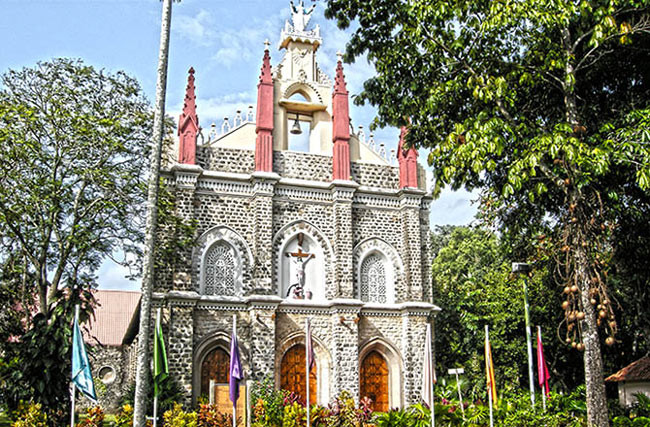
At the mass, the bishop explained the scientific mission and asked the permission of his congregation to hand over the church to the scientists. In his book Ignited Minds: Unleashing The Power Within India, Dr. A.P.J. Abdul Kalam has described this particular incident beautifully.
Thanks to the Reverend’s efforts, permission was granted, the paperwork was done and the villagers relocated to a new village with a brand new church in 100 days flat. The bishop’s home was quickly converted into an office, the church became the workshop, and cattle sheds served as storage houses and laboratories. Undeterred by the little funding and few facilities, a handful of enthusiastic young Indian scientists began assembling their first rocket.

Carefully selected by Dr Sarabhai, the then-chairman of the national committee on space research, these young scientists and engineers had been trained in sounding rocket assembly and launching at NASA’s Wallops Island launching facility in Virginia, United States. The early recruits included former President APJ Abdul Kalam, veteran scientist R Aravamudan .
In the initial stages, Thumba had no canteen or facilities of any sort, so the scientists would cycle every day to the railway station at Trivandrum for their breakfast and dinner (they would get their lunch packed). In those days, the only jeep was always busy, so the scientists had to either walk or use a cycle to move within the range. While weekdays would be very busy, the scientist would have nothing much to do during holidays or weekends. So, they would either go to the beaches at Kovalam or Shankumukham or catch an old Hollywood movie at Srikumar theatre.
Also Read : Here’s What These Really Cool ISRO Scientists Have to Say about Work, Motivation… And Space!
Back then, even rocket parts and payloads were transported by bullock carts and bicycle to the launch pad. It was in these unassuming settings that India staged its first launch—that of a Nike-Apache rocket supplied by NASA. This is how it happened.
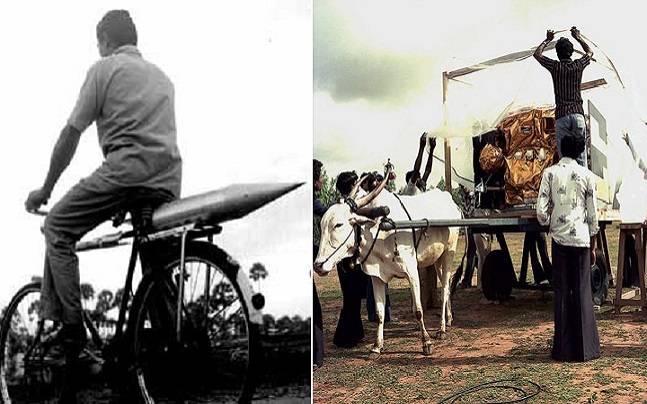
After six months of labour, on 21 November 1963, India was ready for its very first rocket launch. Many eminent names in science and technology had gathered for the occasion, including Dr Homi Bhabha (the father of Indian nuclear programme) and Dr P R Pirashoty (the founder-director of Indian Institute of Tropical Meteorology). The Governor of Kerala was also there along with the district collector and the bishop.

When the rocket was rolled out on to the launch pad, the sultry air was thick with tension. And almost immediately the things started going awry. As the rocket was being hoisted onto the launcher, the hydraulic crane developed a leak. Somehow, it was manually shifted into position. Next, remote system of the launcher malfunctioned. Once this was fixed, things finally seemed in order. As the alarm sounded to clear the area around the launch pad, the team of scientist held their breath.

At 6.25 pm, the world was watching as the rocket streaked away into the gathering dusk. Minutes later, a sodium vapour cloud had emerged in the sky high above, tinted orange by the setting sun. India had successfully put its first signature on space.

An elated Dr. Sarabhai sent a telegram home saying: “Gee whiz wonderful rocket show.” Dr Kalam later remembered how the very next day, Dr Sarabhai had congratulated the happy team and spoken to them about his dream of an Indian satellite launch vehicle. And over the years, Indian Space Research Organisation (ISRO) has not only fulfilled the visionary leader’s dream, but has also made India’s space programme the envy of the world with its ‘success on a shoestring’.
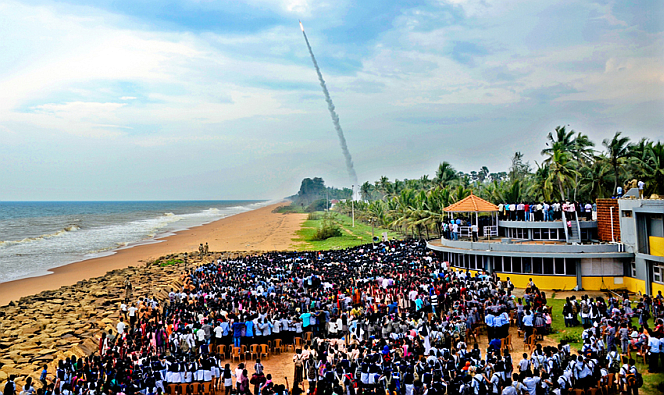
Fifty three years later, Thumba is the hub of all space programmes helmed by the Indian Space Research Organisation (ISRO). The Vikram Sarabhai Space Centre at Thumba has given India launch vehicles, geo-stationary satellites (used for telecommunications, television transmission and weather forecasting) and some of the finest remote sensing satellites.
As for the little church that helped India reach for the stars, it now houses a space museum replete with a fascinating array of rockets, satellites and other astronomical equipment.
Here’s a timeline of ISRO’s genesis in the 1960s to today.
8 Reasons Why India’s Mars Orbiter Mission Mangalyaan Is The Most Amazing Space Mission In The World
Like this story? Have something to share? Email: contact@thebetterindia. com , or join us on Facebook and Twitter (@thebetterindia) . NEW! Log into www.gettbi.com to get positive news on Whatsapp.
If you found our stories insightful, informative, or even just enjoyable, we invite you to consider making a voluntary payment to support the work we do at The Better India. Your contribution helps us continue producing quality content that educates, inspires, and drives positive change.
Choose one of the payment options below for your contribution-
By paying for the stories you value, you directly contribute to sustaining our efforts focused on making a difference in the world. Together, let’s ensure that impactful stories continue to be told and shared, enriching lives and communities alike.
Thank you for your support. Here are some frequently asked questions you might find helpful to know why you are contributing?

Sounds Interesting? Share it now!
This story made me
Tell Us More

- International
- Today’s Paper
- Premium Stories
- Express Shorts
- Health & Wellness
- Brand Solutions
Gopi Thotakura to be the first Indian space tourist: What is space tourism?
In recent years, space tourism has grown by leaps and bounds. according to media reports, in 2023, the space tourism market was valued at $848.28 million..
Entrepreneur and pilot Gopi Thotakura is set to become the first Indian to venture into space as a tourist on the NS-25 mission of Blue Origin — a company founded by Jeff Bezos, who is also the founder of Amazon.
Thotakura has been selected as one of the six crew members for the mission, whose launch date is yet to be announced. If the mission is successful, Thotakura would be the second Indian to go into space. The first one was Wing Commander Rakesh Sharma, who flew to the Salyut 7 space station on a Soviet spacecraft in 1984.

In recent years, space tourism has grown by leaps and bounds. According to media reports, in 2023, the space tourism market was valued at $848.28 million. It is expected to grow to $27,861.99 million by 2032. However, there are several challenges, such as high cost, and environmental concerns, that may limit the industry’s growth.
Here is a look at who Thotakura is, what space tourism is, and what challenges it is facing.
Who is Gopi Thotakura?
A graduate of the US-based Embry-Riddle Aeronautical University, Thotakura flies jets commercially, according to a press release by Blue Origin.

“Gopi is a pilot and aviator who learned how to fly before he could drive,” it said. He is also a co-founder of Preserve Life Corp — a global centre for holistic wellness and applied health located near Hartsfield-Jackson Atlanta International Airport.
“Gopi pilots bush, aerobatic, and seaplanes, as well as gliders and hot air balloons, and has served as an international medical jet pilot. A lifelong traveller, his most recent adventure took him to the summit of Mt. Kilimanjaro,” the press release said.
What is space tourism?
Space tourism is essentially a section of the aviation sector which seeks to provide tourists with the opportunity to become astronauts and experience space travel for recreational, leisure, or business purposes, according to the book ‘Air Transport: A Tourism Perspective’, edited by Anne Graham, Frederic Dobruszkes.
There are two main types of space tourism, sub-orbital and orbital. The sub-orbital spacecraft takes passengers just beyond the Kármán line — it lies nearly 100 kilometres above our heads and is considered to be the boundary between Earth’s atmosphere and outer space. The passengers get to spend a few minutes in outer space and then come back to Earth.
The NS-25 mission, which Thotakura is a part of, is a sub-orbital mission. Thotakura and his other crew members will be taken to outer space via New Shepard, a fully reusable sub-orbital launch vehicle developed specifically for space tourism by Blue Origin.
The orbital spacecraft, on the other hand, takes passengers much further than the Kármán line. Usually, passengers can spend from a couple of days to more than a week at an altitude of nearly 1.3 million feet.
In September 2021, Space X’s Falcon 9 took four passengers to an altitude of 160 km where they spent three days orbiting the Earth.
What are the challenges?
Currently, space tourism is expensive. A passenger generally has to pay at least a million dollars to reach outer space. This amount is out of reach for almost everyone.
Moreover, several studies have pointed out that space tourism may lead to environmental damage as rockets emit gaseous and solid chemicals directly into the upper atmosphere.
A 2022 study done by researchers University College London (UCL), the University of Cambridge and the Massachusetts Institute of Technology (MIT) found that the soot emissions from rocket launches are far more effective at warming the atmosphere compared to other sources.
Safety is also a concern when it comes to space tourism. Despite high safety standards, a total of 676 people have flown into space and 19 of them have died, as of November 2023, according to a report by Astronomy Magazine . This means that approximately 3% of astronauts died during their space flight which is quite a high fatality rate.
- Express Explained
- space tourism
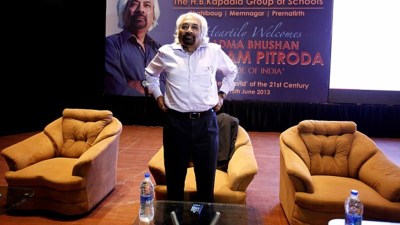
Amid row over several controversial remarks, Sam Pitroda on Wednesday stepped down as the Chairman of the Indian Overseas Congress "of his own accord." His resignation was accepted by party President Mallikarjun Kharge, Congress General Secretary in-charge (Communications) Jairam Ramesh said.
UPSC Magazine

Read UPSC Magazine

More Explained

Best of Express

EXPRESS OPINION

May 08: Latest News
- 01 Israeli tanks have rolled into Rafah. What does this mean for the Palestinians sheltering there?
- 02 IPL 2024: Watch Sanju Samson’s dismissal by TV umpire sparks controversy in DC vs RR match
- 03 Punjab government refuses VRS to IAS officer who is BJP’s Lok Sabha candidate in Bathinda
- 04 Bombay HC seeks state govt reply to PIL alleging illegalities in ‘Dial 108’ ambulance project contract
- 05 Total 116 candidates from six seats in fray in Mumbai
- Elections 2024
- Political Pulse
- Entertainment
- Movie Review
- Newsletters
- Web Stories
Advertisement
Analysis and Space
How india has slowly but surely become a major player in space.
India’s space agency has been remarkably successful in recent years, growing the country’s prestige on the global stage – and the 2024 election is unlikely to change that
By Leah Crane
30 April 2024

India launched Chandrayaan-3 to the moon last year
If India seems like a latecomer to space flight, it is only because the country’s space agency has been slowly and steadily growing for decades, catching up with the original major players. When the Chandrayaan-3 spacecraft managed the first ever soft landing near the south pole of the moon in 2023, it marked a triumph for the Indian Space Research Organisation (ISRO) and a sign that the agency’s unique way of operating makes it capable of great things.
Can India build a world-leading computer chip industry from scratch?
The strategy that has made all of this work was championed in the 1960s by Vikram Sarabhai, often considered the father of the Indian space programme. He rejected the idea that the country had to work its way up through every stage of learning how to do space flight , instead insisting on “leapfrogging”, using knowledge that had already been gained by other nations along with expertise developed at home.
“What you’re seeing now is the product of four decades of serious investment in this programme that a lot of people dismissed as being inappropriate for a developing country, but turns out to have been a smart decision all along,” says Itty Abraham at Arizona State University. “It’s done a great job of absorbing technologies from different countries and stitching them together to make something that’s uniquely Indian.”
Why it's a big deal that India beat Russia in the new race to the moon
The Chandrayaan-3 mission is a perfect example of this. ISRO has stated that the budget for the mission was only £60 million ($74 million), less than the cost of a commercial aeroplane and an astonishingly low price tag for a spacecraft. This was enabled in part by the use of more cost-effective off-the-shelf parts alongside custom-built ones, as well as contracts with private companies for some of the spacecraft development and manufacturing.
Sign up to our Launchpad newsletter
Voyage across the galaxy and beyond with our space newsletter every month.
That private company involvement is relatively new for ISRO, a change heralded by Narendra Modi, India’s prime minister since 2014. “Where Modi has made a difference is that he has encouraged the private sector to step in in a way that is very unusual for Indian government programmes,” says Abraham. “If you look at the other government projects, the private sector is there but in a very small way.” ISRO didn’t respond to a request for comment.
But more broadly, India’s election is unlikely to change ISRO’s direction, given the geopolitical prestige that comes with success in space. “The space programme has managed to remain independent for so long because it’s been successful,” says Abraham. “In this case, it doesn’t matter who’s in charge – they’re all going to throw money at it.”
This article is part of a special series on India’s election.
- space exploration
Sign up to our weekly newsletter
Receive a weekly dose of discovery in your inbox! We'll also keep you up to date with New Scientist events and special offers.
More from New Scientist
Explore the latest news, articles and features
India's Chandrayaan-3 moon rover swerves to avoid crater
India’s chandrayaan-3 mission starts exploring the moon’s south pole, environment, india's next leader will have the chance to lead the world on climate, running around a 'wall of death' could keep moon settlers fit, popular articles.
Trending New Scientist articles
- India Today
- Business Today
- Reader’s Digest
- Harper's Bazaar
- Brides Today
- Cosmopolitan
- Aaj Tak Campus
- India Today Hindi
How Sunita Williams completed a Triathlon in space. Yes, it involved swimming
Williams was on her second flight to space as commander of expedition 33 crew when she competed in the triathlon from space with athletes on earth..
Listen to Story

- The launch to splashdown will take around 10 days
- Sunita Williams has logged over 3,000 flight hours in over 30 aircraft
- Williams ranks among one of the most experienced astronauts
Indian-origin astronaut Sunita Williams is all set to return to space on her third flight outside Earth on Tuesday. The former Naval test pilot will launch aboard Boeing Starliner's test flight as the company aims to get certified as fit for flight by Nasa.
Sunita Williams will be joined by Nasa's Barry Willmore on the flight as they fly the Starliner spacecraft to the International Space Station, dock in zero gravity, and then return to splashdown on Earth.
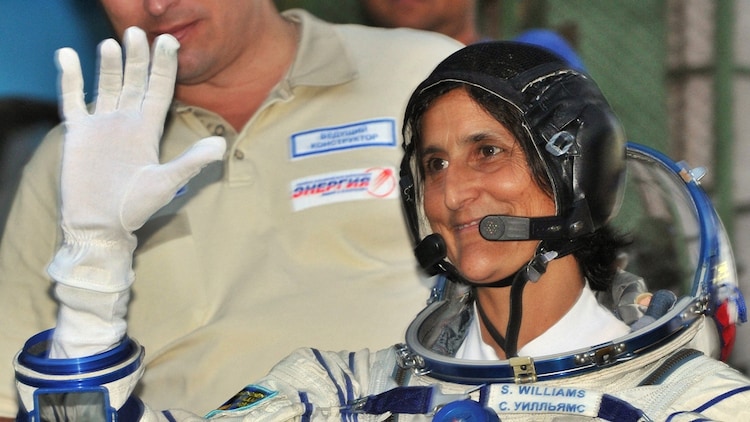
To complete the 29 km biking portion, Williams used a stationary bike and a specially outfitted treadmill was used for the 6.4 km run. She completed the Triathlon in one hour, 48 minutes and 33 seconds.
"I'm happy to be done," said Williams as she crossed the finish line. "It wasn't easy and I'm sure everybody in California's very happy to be done too."
- You Are At:
Sunita Williams and Butch Wilmore to travel in space tomorrow: Details here
Nasa astronaut sunita williams, along with butch wilmore is scheduled to travel in a historic journey to space in boeing's starliner. the launch will take place from space launch complex-41 at cape canaveral space force station in florida at 8:04 a.m. ist on may 7, facilitated by a united launch all.

The 59-year-old is set to create history by being the first woman to fly on the maiden mission of a new human-rated spacecraft. This will be Sunita's third flight to space -- the first in 2006 and the second in 2012.
According to NASA, "Sunita has spent a cumulative total of 322 days in space.”

"When I reach the International Space Station, it will be like going back home,” she was quoted as saying to NDTV.
Sunita, who will serve as the mission pilot, has named the CST-100 Starliner spacecraft “Calypso” for her love of the ocean.
It is also “in reference to the ship of famed explorer Jacques Cousteau, who sailed across the world on his own ship bearing the same name,” NASA shared in a post on X.com.
Meanwhile, NASA predicts about a 95 per cent chance of favourable weather conditions at the launch pad for a liftoff.
The mission called Crew Flight Test (CFT) will last about 10 days and will demonstrate the end-to-end capabilities of the Starliner system.

Astronaut Sunita Williams may attend Pravasi Bharatiya Divas

Top 12 most famous American Indian women

Sunita Williams speaks to India TV, asks Indian students to aim for the best in life

US astronaut Sunita Williams arrives at her native village

Being in space can change your perspective: Sunita Williams

I also carried samosas in space: Sunita Williams

Sunita Williams among four selected for NASA's manned Mars mission

Sunita Williams set for her third mission in space: All you need to know
“Their mission: to test #Starliner for commercial flight. Sate travels, star sailors. You are the pride of our great nation,” he added.
The Starliner spacecraft, with a diameter of 15 feet (4.56 meters), is capable of carrying up to four astronauts, or a mix of crew and cargo, for NASA missions to low Earth orbit for the agency’s Commercial Crew Programme.
Recently NASA also announced a space mission which took off on Wednesday , (April 24), which was marked as a significant advancement in space exploration. The new spacecraft which is equipped with NASA's Advanced Composite Solar Sail System has been utilising sunlight for propulsion. Rocket Lab's Electron rocket was launched from New Zealand at 3:30 am IST, and it is further said that it is set to be installed 1,000 kilometres above Earth.
ALSO READ: Boeing's Starliner set for 1st space mission with humans on May 6: Details
Inputs from IANS
Read all the Breaking News Live on indiatvnews.com and Get Latest English News & Updates from Science
- sunita williams

Lok Sabha Elections: Voting in 93 Lok Sabha seats today, PM Modi, Shah to cast vote in Gandhinagar

Fan presents Ranbir Kapoor with handmade portrait of daughter Raha; actor's reaction melts hearts

MI still in contention as they move up in standings, SRH's loss good news for others
Related Science News

Earth receives laser signal from 140 million miles away: Here's what's happening

ISRO's latest images show Chandrayaan-3's Vikram lander, Pragyan rover resting on Moon

Studies suggest more ice on Moon within exploitable depths, says ISRO

NASA successfully launches solar-powered spacecraft: All you need to know

South Korea set to launch 1st ever homegrown nanosatellite: Details
Latest News

Russia-Ukraine war: Ukraine embattles east mark third Easter under fire; continue exchanging fire
Xi Jinping in France: Why China’s President's visit dubbed crucial for EU, Russia-Ukraine war?
Manoj Bajpayee starrer 'The Family Man 3' goes on floors; fans get excited | E wrap | 06th May
- Aap Ki Adalat
- Aaj Ki Baat
- Kurukshetra
- Haqiqat Kya Hai
- Entertainment

Bahubali: Dhananjay Singh...you must have heard the name.

Aaj Ki Baat: Mountain of notes found in Jharkhand...
- Maharashtra
- Uttar Pradesh
- Madhya Pradesh
- West Bengal
- Jammu & Kashmir
- Chhattisgarh

Charanjit Singh Channi's clarification on Poonch terror attack, says 'it should not be politicised'

EC appoints Harish Kumar Gupta as new Andhra Pradesh DGP, replaces KV Rajendranath Reddy

Nayab Singh Saini files nomination for Karnal Assembly bypoll, Khattar for Karnal Lok Sabha seat

181 VCs, academicians condemn Rahul Gandhi's remarks on 'University heads selection process'

Jet Airways founder Naresh Goyal granted interim bail for medical reasons
- Constituencies
- Key Candidates

Suryakumar becomes fourth MI batter in history of IPL to create big record as he guides team home

MI vs SRH IPL 2024 Highlights: Suryakumar Yadav smashes century to take Mumbai over the line with 7

Has any team reached IPL playoffs on 12 points? Decoding MI and RCB's chances for qualification

MS Dhoni and Jitesh Sharma repeat 12-year-old unwanted feat in PBKS vs CSK clash

Hamas says it accepts Gaza ceasefire proposal hours after Israel orders Rafah evacuation

Columbia University cancels graduation ceremony as pro-Palestinian protests roiled campuses

This Australian airline sold tickets for cancelled flights, now paying a hefty fine of $79 million

Rafah under attack: IDF rages war on Gaza hours after it asks over 1 lakh Palestinians to vacate

Haryana farmer sold land to fund his son's education, fellow Indian friends killed him in Australia
- Celebrities

Parineeti Chopra's singing debut resurfaces, charms fans in viral throwback clip

Bison Kaalamaadan: Chiyaan Vikram's son Dhruv begins filming for Mari Selvaraj's directorial

'When we get a...', Preity Zinta about reuniting with Shah Rukh Khan for future projects

12th Fail star Vikrant Massey enjoys quality time with son, wife Sheetal Thakur shares first glimpse
- Live Scores
- Other Sports

Harmanpreet Kaur, debutant Asha Sobhana star as India make it 4-0 against Bangladesh

What is a hybrid pitch as Indian cricket embarks on new innovation?

Instagram faces lawsuit over Kiss Challenge: All you need to know

Apple’s iPhone 15 Pro Max: Best-selling smartphone in Q1 2024

World's first 6G device unveiled: All you need to know

Vivo X100 series launch confirmed for May 13: Price, availability and more

Apple Watch saves Delhi woman's life, thanked Tim Cook: DETAILS

Explained: How 8 teams will benefit from Mumbai Indians' win against Sunrisers Hyderabad in IPL 2024

Feroze Gandhi to Rahul Gandhi: Rae Bareli's tryst with Gandhi family in Lok Sabha polls | Explained

What is Digital House Arrest and how to avoid it? | Explained

Why is US acquiring 81 'obsolete' Soviet-era combat aircraft from key Russian ally Kazakhstan?

Getting unknown calls on new number? Here's what is Recycled Mobile Number, how this policy works

Horoscope Today, May 6: Profitable day for Pisces; know about other zodiac signs

Horoscope Today, May 5: Aquarius to get support in work; know about other zodiac signs

Horoscope Today, May 4: Capricorn to help old friend; know about other zodiac signs

Weekly Horoscope (May 6-May 12): Virgos must manage finances better; know about other zodiac signs

Horoscope Today, May 3: Fruitful day for Capricorn; know about other zodiac signs

Sensex ends marginally higher after volatile trade; Nifty below 22,500

Stock markets update: Sensex surges over 450 points, Nifty opens above 22,550 points

"India holds untapped, unattended opportunities," says Warren Buffett

Foreign portfolio investors return as buyers in Indian stock market

Paytm COO Bhavesh Gupta quits, company rejigs senior management

World Asthma Day 2024: 5 essential tips to manage symptoms of this lung disease
World Asthma Day 2024: Date, theme, history, significance and more about the lung disease

FLiRT, new COVID-19 variant, spreads in US: Is it dangerous? Know symptoms and more

Is anger bad for your heart health? Know reasons and how to avoid rage

5 reasons why you should avoid drinking coffee on an empty stomach
- Election 2024
- Entertainment
- Newsletters
- Photography
- Personal Finance
- AP Investigations
- AP Buyline Personal Finance
- AP Buyline Shopping
- Press Releases
- Israel-Hamas War
- Russia-Ukraine War
- Global elections
- Asia Pacific
- Latin America
- Middle East
- Election Results
- Delegate Tracker
- AP & Elections
- Auto Racing
- 2024 Paris Olympic Games
- Movie reviews
- Book reviews
- Personal finance
- Financial Markets
- Business Highlights
- Financial wellness
- Artificial Intelligence
- Social Media
Boeing is on the verge of launching astronauts aboard new capsule, the latest entry to space travel
Boeing’s Starliner capsule atop an Atlas V rocket is rolled out to the launch pad at Space Launch Complex 41, Saturday, May 4, 2024, in Cape Canaveral, Fla. NASA astronauts Butch Wilmore and Suni Williams will launch aboard to the International Space Station, scheduled for liftoff on May 6, 2024. (AP Photo/Terry Renna)
NASA’s Boeing Crew Flight Test astronauts Suni Williams and Butch Wilmore exit the Neil A. Armstrong Operations and Checkout Building at the agency’s Kennedy Space Center in Florida during a mission dress rehearsal on Friday, April 26, 2024. The first flight of Boeing’s Starliner capsule with a crew on board is scheduled for Monday, May 6, 2024. (Frank Micheaux/NASA via AP)
Boeing Crew Flight Test crew members Suni Williams and Butch Wilmore work in the Boeing Starliner simulator at the Johnson Space Center in Houston on Nov. 3, 2022. The first flight of Boeing’s Starliner capsule with a crew on board is scheduled for Monday, May 6, 2024. (NASA/Robert Markowitz)
- Copy Link copied
CAPE CANAVERAL, Fla. (AP) — After years of delays and stumbles, Boeing is finally poised to launch astronauts to the International Space Station for NASA.
It’s the first flight of Boeing’s Starliner capsule with a crew on board, a pair of NASA pilots who will check out the spacecraft during the test drive and a weeklong stay at the space station.
NASA turned to U.S. companies for astronaut rides after the space shuttles were retired. Elon Musk’s SpaceX has made nine taxi trips for NASA since 2020, while Boeing has managed only a pair of unoccupied test flights.
Boeing program manager Mark Nappi wishes Starliner was further along. “There’s no doubt about that, but we’re here now.”
The company’s long-awaited astronaut demo is slated for liftoff Monday night.
Provided this tryout goes well, NASA will alternate between Boeing and SpaceX to get astronauts to and from the space station.
A look at the newest ride and its shakedown cruise:
NASA’s Boeing Crew Flight Test astronauts Suni Williams and Butch Wilmore exit the Neil A. Armstrong Operations and Checkout Building at the agency’s Kennedy Space Center in Florida during a mission dress rehearsal on Friday, April 26, 2024. (Frank Micheaux/NASA via AP)
THE CAPSULE
White with black and blue trim, Boeing’s Starliner capsule is about 10 feet (3 meters) tall and 15 feet (4.5 meters) in diameter. It can fit up to seven people, though NASA crews typically will number four. The company settled on the name Starliner nearly a decade ago, a twist on the name of Boeing’s early Stratoliner and the current Dreamliner.
No one was aboard Boeing’s two previous Starliner test flights. The first, in 2019, was hit with software trouble so severe that its empty capsule couldn’t reach the station until the second try in 2022. Then last summer, weak parachutes and flammable tape cropped up that needed to be fixed or removed.
Veteran NASA astronauts Butch Wilmore and Suni Williams are retired Navy captains who spent months aboard the space station years ago. They joined the test flight after the original crew bowed out as the delays piled up. Wilmore, 61, is a former combat pilot from Mount Juliet, Tennessee, and Williams, 58, is a helicopter pilot from Needham, Massachusetts. The duo have been involved in the capsule’s development and insist Starliner is ready for prime time, otherwise they would not strap in for the launch.
“We’re not putting our heads in the sand,” Williams told The Associated Press. “Sure, Boeing has had its problems. But we are the QA (quality assurance). Our eyes are on the spacecraft.”
THE TEST FLIGHT
Starliner will blast off on United Launch Alliance’s Atlas V rocket from Cape Canaveral Space Force Station. It will be the first time astronauts ride an Atlas since NASA’s Project Mercury, starting with John Glenn when he became the first American to orbit the Earth in 1962. Sixty-two years later, this will be the 100th launch of the Atlas V, which is used to hoist satellites as well as spacecraft.
“We’re super careful with every mission. We’re super, duper, duper careful” with human missions, said Tory Bruno, CEO of ULA, a joint venture of Boeing and Lockheed Martin.
Starliner should reach the space station in roughly 26 hours. The seven station residents will have their eyes peeled on the approaching capsule. The arrival of a new vehicle is “a really big deal. You leave nothing to chance,” NASA astronaut Michael Barratt told the AP from orbit. Starliner will remain docked for eight days, undergoing checkouts before landing in New Mexico or elsewhere in the American West.
STARLINER VS. DRAGON
Both companies’ capsules are designed to be autonomous and reusable. This Starliner is the same one that made the first test flight in 2019. Unlike the SpaceX Dragons, Starliner has traditional hand controls and switches alongside touchscreens and, according to the astronauts, is more like NASA’s Orion capsules for moon missions. Wilmore and Williams briefly will take manual control to wring out the systems on their way to the space station.
NASA gave Boeing, a longtime space contractor, more than $4 billion to develop the capsule, while SpaceX got $2.6 billion. SpaceX already was in the station delivery business and merely refashioned its cargo capsule for crew. While SpaceX uses the boss’ Teslas to get astronauts to the launch pad, Boeing will use a more traditional “astrovan” equipped with a video screen that Wilmore said will be playing “Top Gun: Maverick.”
One big difference at flight’s end: Starliner lands on the ground with cushioning airbags, while Dragon splashes into the sea.
Boeing is committed to six Starliner trips for NASA after this one, which will take the company to the station’s planned end in 2030. Boeing’s Nappi is reluctant to discuss other potential customers until this inaugural crew flight is over. But the company has said a fifth seat will be available to private clients. SpaceX periodically sells seats to tycoons and even countries eager to get their citizens to the station for a couple weeks.
Coming soon: Sierra Space’s mini shuttle, Dream Chaser, which will deliver cargo to the station later this year or next, before accepting passengers.
The Associated Press Health and Science Department receives support from the Howard Hughes Medical Institute’s Science and Educational Media Group. The AP is solely responsible for all content.

- Weather
Search location by ZIP code
63 years ago this week, new hampshire's alan shepard became first american in space.
Shepard later walked on the moon on Apollo 14 mission
- Copy Link Copy {copyShortcut} to copy Link copied!

GET LOCAL BREAKING NEWS ALERTS
The latest breaking updates, delivered straight to your email inbox.
This week marks 63 years since a Derry man became the first American to travel in space.

On May 5, 1961, Alan Shepard made history.
Before lifting off, Shepard reportedly said to himself, "Don't mess up, Shepard."
He spent 15 minutes flying in the Mercury capsule "Freedom 7," before a safe return to Earth. It was the first step in the long history of U.S. exploration of space.
He was awarded the NASA Distinguished Service Medal by President John F. Kennedy on May 8, 1961, when he was back on solid ground.
Shepard was a graduate of Pinkerton Academy, and local historians say his story is an important chapter in Derry's already rich history.
"He is a hero for Derry and New Hampshire, and emulating that with the young folks in town is really a positive for them," said Karen Blandford-Anderson, of the Derry Heritage Commission.
Ten years after traveling into space, Shepard became one of the few people to ever walk on the moon.
>> Related: Space tourism now a reality 6 decades after Alan Shepard's pioneering spaceflight
While on the moon, Shepard hit two golf balls that traveled for "miles and miles and miles."
Shepard's memory remains part of the fabric of Derry's identity.
>> Related video: Derry community still very proud of Alan Shepard:
Watch CBS News
While illegal crossings drop along U.S. border, migrants in Mexico grow desperate
By Camilo Montoya-Galvez , Suvro Banerji, Costanza Maio
Updated on: May 8, 2024 / 8:10 AM EDT / CBS News
Ciudad Juárez, Mexico — Desperate and exhausted, the migrants gathered around a tree that offered them some shade from the unforgiving sun.
They had traveled from countries throughout Latin America, including Colombia, the Dominican Republic, Ecuador, Guatemala, Honduras, Peru and Venezuela. Some of them were parents traveling with small children, including toddlers. Others were young men. Some of the teenagers appeared to be unaccompanied minors traveling without their parents.
All of them shared a common goal: entering the U.S., which was just a few yards away. But standing in their way were miles of razor wire and other barriers erected by the state of Texas at the direction of Gov. Greg Abbott to deter migrants from crossing into the U.S. illegally.
"They're trying to kill us," one of the migrant men said in Spanish, showing CBS News cameras how sharp the wire could be.
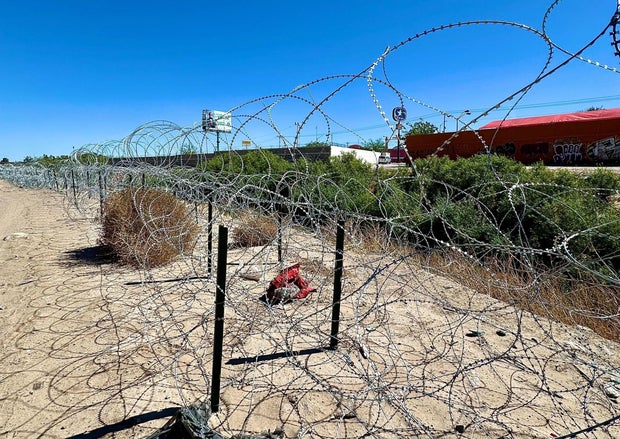
Some said they had tried to get past the barriers several times to no avail. At one point, the migrants huddled around the cameras to describe the austere conditions in the makeshift camp they had set up near the U.S. border with tents and blankets.
They said they had been sleeping near that tree for days, some as long as two weeks, braving the elements for a chance to enter the U.S. "We don't have food. We don't have water," one Venezuelan woman carrying a small child said in Spanish.
Rene, a migrant from Honduras, said he had been sleeping outside for 15 days, after traveling to Mexico with his young daughters, ages 3 and 9. He pointed to an area filled with brushes where they slept, using blankets to shield themselves from the cold temperatures at night and in the morning.
"I don't sleep the entire night," Rene said in Spanish, noting he closes his eyes only intermittently to make sure his daughters are OK.
Illegal crossings fall
Illegal crossings along the U.S. southern border have dropped by more than 40% this year since soaring to record levels in December. In April, U.S. Border Patrol recorded roughly 129,000 unlawful crossings, the second consecutive monthly drop, according to preliminary government data obtained by CBS News. The pattern has defied historical trends — migration usually spikes in the spring.
Still, tens of thousands of migrants are estimated to be waiting in Mexico, in places like Ciudad Juárez where shelter space is limited and the conditions are sometimes dire.
Many in Mexico are waiting to secure an appointment to enter the U.S. at an official port of entry through a Biden administration program powered by a smartphone app known as CBP One. But the process is capped at roughly 1,500 spots each day. And the demand in Mexico is far higher.
Facing wait-times that often extend for months, some migrants, like the ones in the makeshift encampment, grow desperate and decide to try to cross into the U.S. illegally. But they first have to make it past the Texas barriers to surrender to federal Border Patrol agents, the initial step in the years-long asylum process.
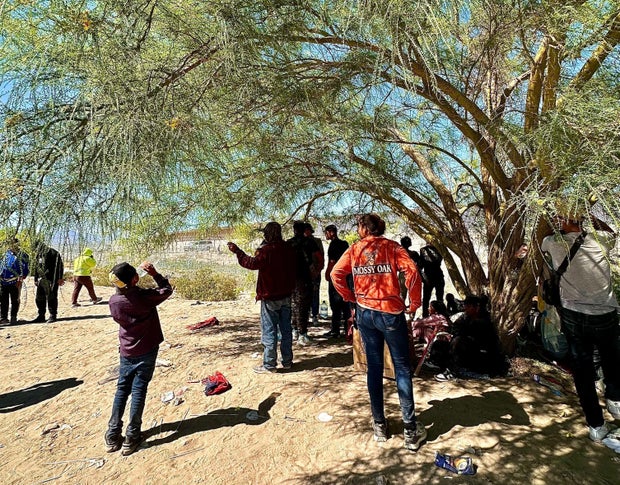
Karina Breceda, who oversees migrant shelters in Ciudad Juárez and El Paso, called the barricades set up by Texas "inhumane," noting she has helped some migrants, including children, who were cut by the razor wire.
"The U.S. is the greatest country in the world," Breceda said. "We're able to have, I think, policy that treats this situation with dignity."
But on the U.S. side of the border, Texas Department of Public Safety Sergeant Eliot Torres said the wire is supposed to serve as a "sign" warning migrants not to enter the U.S. between official ports of entry, which is a federal crime. Texas has also sought to make the act a state crime through a law known as SB4, but federal courts have blocked the measure at the request of the Biden administration.
"The inhumane part is in … the optic, right?" Torres said near a stretch of the border near El Paso that Texas has fortified with razor wire and additional fencing. "That's what people perceive it to be."
Torres acknowledged migrants could be cut by the wire. Asked if that's part of the deterrence objective, he said, "Yes." But Torres noted that Texas officials provide medical aid to migrants who sustain injuries or who are otherwise in distress.
"We're here protecting our border, but also we're not going to … just let somebody stand there, have an injury," Torres said.
Abbott and other Texas officials have credited their actions — from the razor wire, to arrests of migrants on state trespassing charges — for the marked decline in migrant crossings in recent months, which has been more acute in the Lone Star State than in Arizona and California.
But federal officials believe the main catalyst is an aggressive crackdown on U.S.-bound migrants by Mexican officials, who have ramped up efforts to stop migrants from boarding trains and buses that would take them closer to the American border. They're also deporting some migrants to southern Mexico.
Still, some migrants like Rene have made it to northern Mexico despite the crackdown, and are willing to wait indefinitely for a chance to make it to the U.S.
"We came searching for the American dream," he said.

Camilo Montoya-Galvez is the immigration reporter at CBS News. Based in Washington, he covers immigration policy and politics.
More from CBS News

15 House Democrats call on Biden to take border executive action
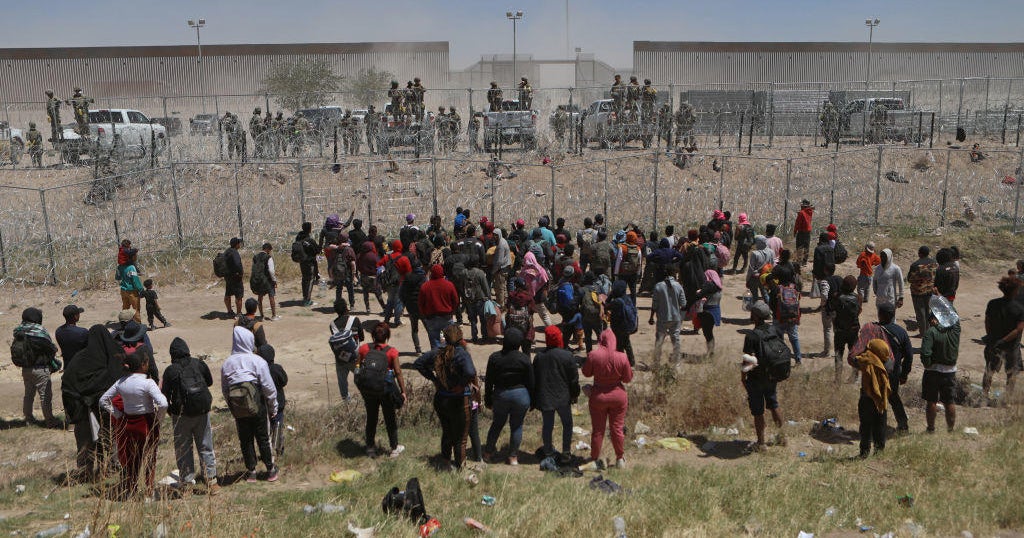
U.S. to empower asylum officials to reject more migrants earlier in process
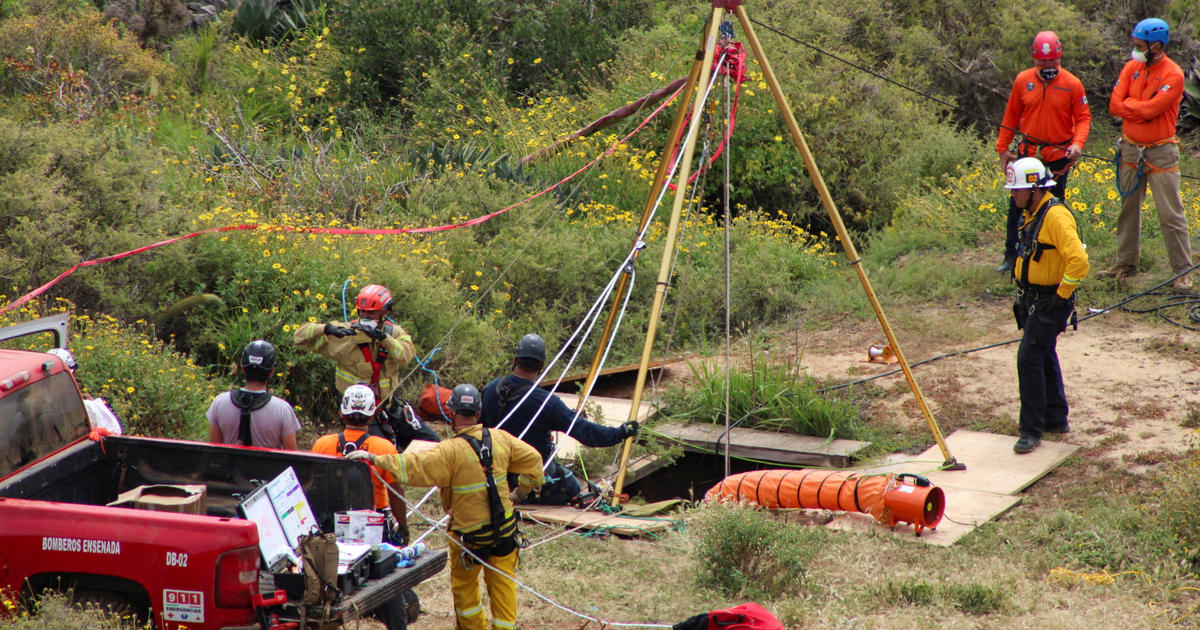
Bodies of missing surfers found with bullet wounds, Mexican officials say

Floods in southern Brazil kill at least 60, more than 100 missing
China set to launch high-stakes mission to moon's 'hidden' side
- Medium Text
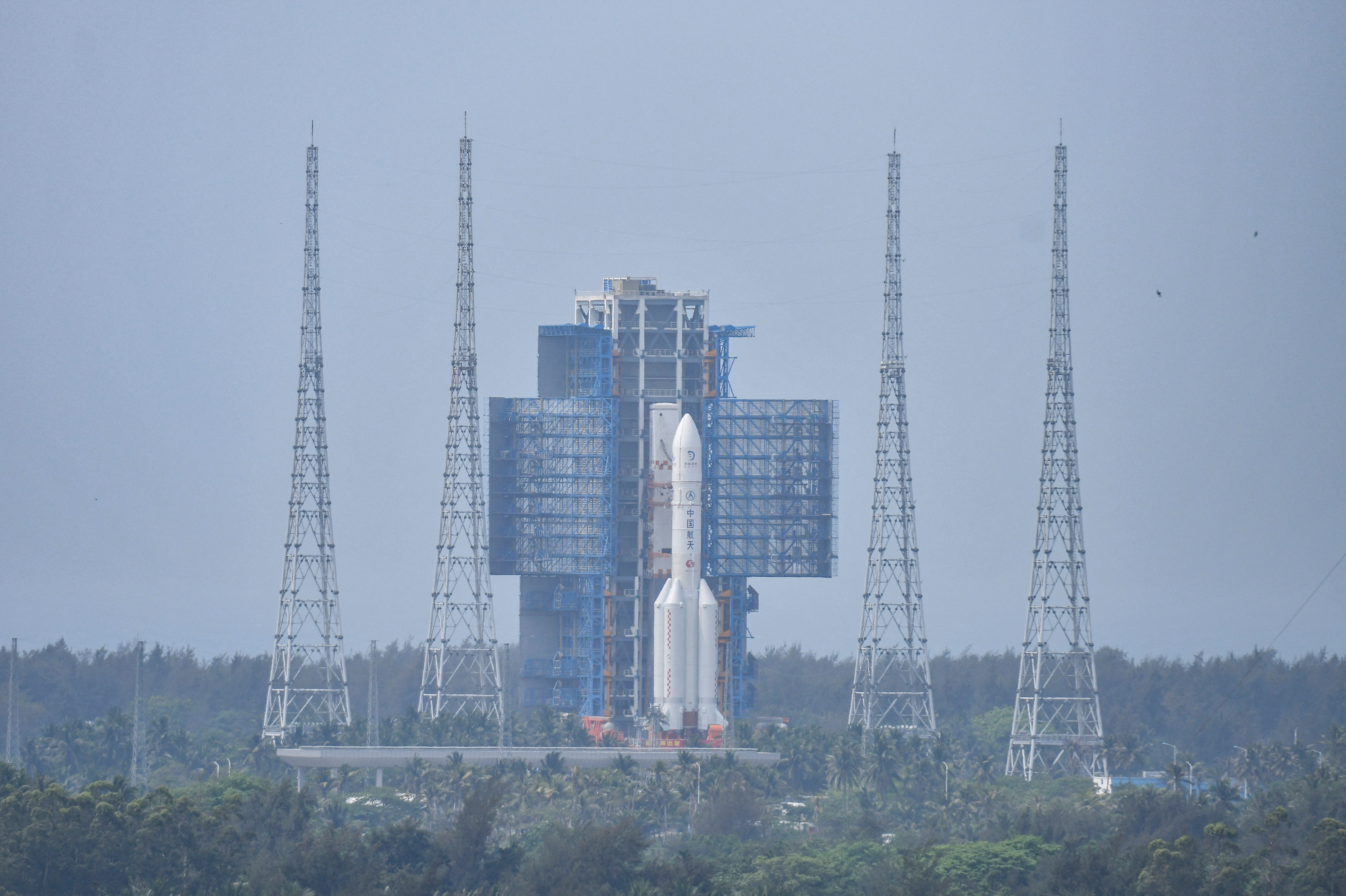
- China expected to launch Chang'e-6 lunar mission this week
- Chang'e-6 to return with soil samples from moon's far side
- Chang'e-6 mission expected to last 53 days
SOUTH POLE AMBITIONS
Sign up here.
Reporting by Albee Zhang and Ryan Woo. Editing by Gerry Doyle
Our Standards: The Thomson Reuters Trust Principles. New Tab , opens new tab
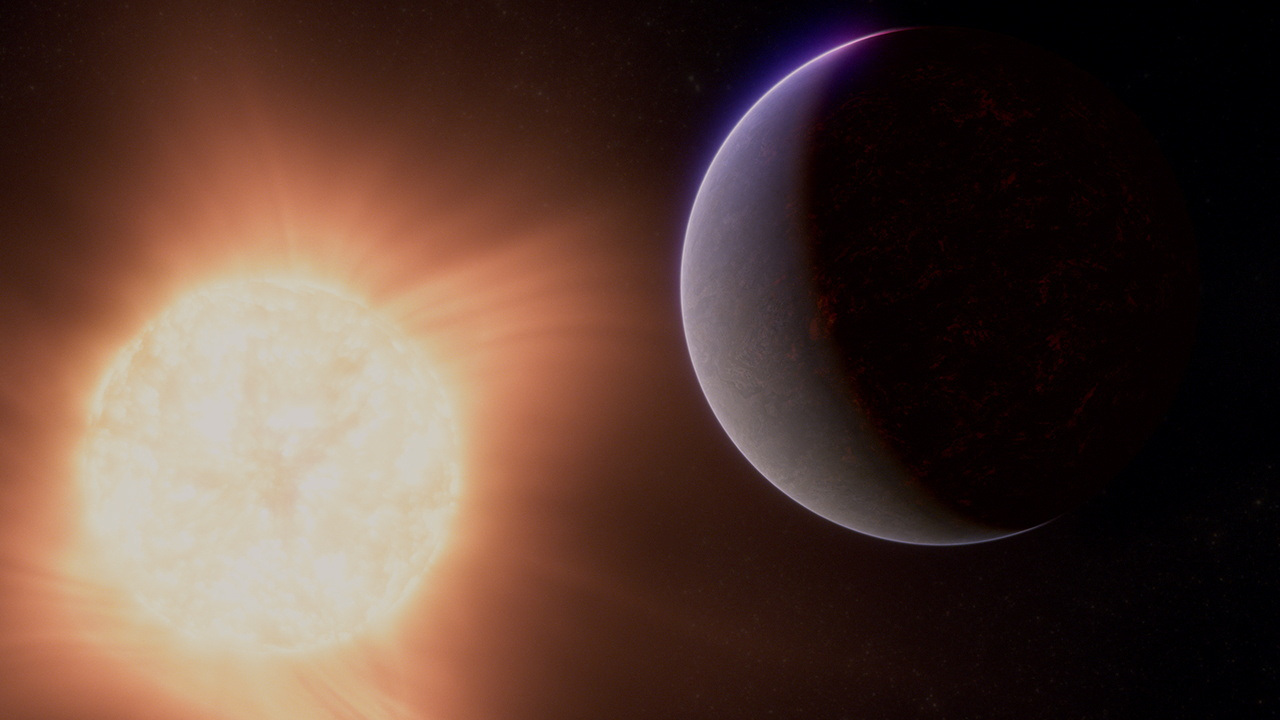
Technology Chevron

Bumble beats first-quarter revenue estimates, shares surge
Bumble beat Wall Street estimates for first-quarter revenue on Wednesday, a sign that its push for attracting payers at its dating apps is paying off.
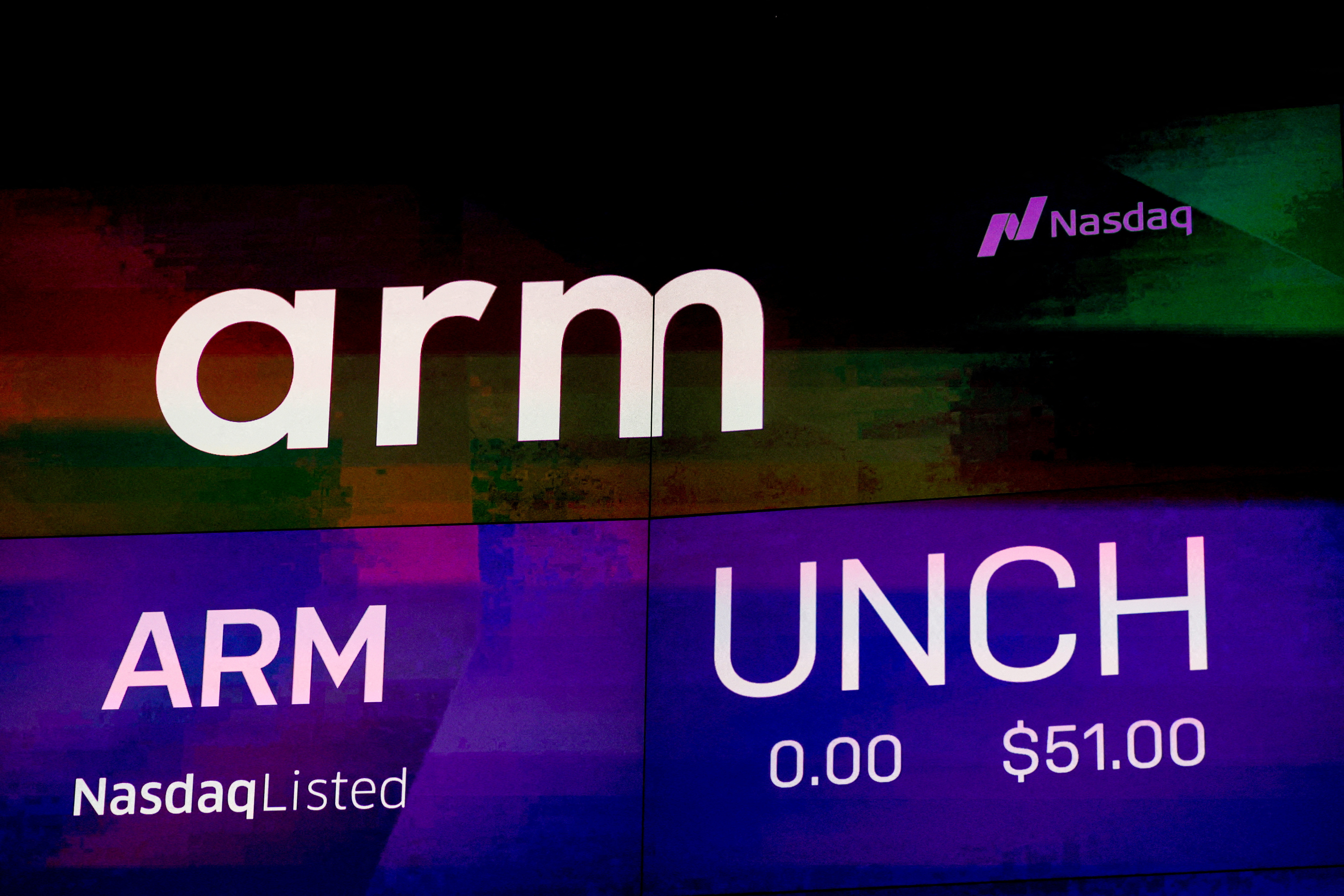

IMAGES
VIDEO
COMMENTS
Rakesh Sharma is an Indian military pilot and cosmonaut, the first Indian citizen in space. In 1970 Sharma joined the Indian Air Force as a pilot. He flew 21 combat missions in a MiG-21 in the Bangladesh war of 1971. In 1982 he was selected as a cosmonaut for a joint Soviet-Indian spaceflight. On
Wing Commander Rakesh Sharma, AC (born 13 January 1949) is an Indian former Air Force pilot who flew aboard Soyuz T-11 on 3 April 1984 as part of the Soviet Interkosmos programme. He is the only Indian citizen to travel in space, although there have been other astronauts of Indian origin who travelled to space, who were not Indian citizens. Another Air Force pilot, Ravish Malhotra, was placed ...
On April 3, 1984, when Rakesh Sharma flew the Soviet rocket Soyuz T-11, he made history. He became the first Indian citizen to reach space. Wing Commander Rakesh Sharma, (retired) was an Indian Air Force pilot on September 20, 1982 was chosen as a cosmonaut to be a part of the joint Indian Space Research Organization (ISRO) and the Soviet Interkosmos space program.
Rakesh Sharma, a Wing Commander and astronaut, made history and brought pride to India when he embarked on a remarkable mission to space. Spending an impressive seven days, 21 hours, and 40 minutes on board the Salyut 7 space station, he became the first Indian to travel beyond Earth's atmosphere. This incredible achievement was made possible ...
The first Indian citizen to travel into space accomplished the historic feat by embarking on a journey aboard the Soviet rocket Soyuz T-11, which was launched from the Baikonur Cosmodrome in the Kazakh Soviet Socialist Republic on April 3, 1984. The spacecraft carried a crew that included Sharma, the ship's commander Yury Malyshev, and flight ...
With the triumphant landing of Chandrayaan 3 near the lunar south pole, India marked a momentous stride in its space endeavours. Rakesh Sharma, the first Indian to go to space, expressed that a ...
Published On: Nov 9, 2018. --- ENDS ---. IAF officer Sqn Ldr Rakesh Sharma flew aboard a Soyuz T11 spacecraft on April 2, 1984, and became the first Indian to journey into space. He spent 7 days, 21 hours and 40 minutes aboard the Salyut 7 orbital station along with two Soviet astronauts. He describes the incredible experience in his own words.
29822. Rakesh Sharma was the first Indian to travel in Space. He was born on 13th January 1949 in Punjab, India. He flew to the Salyut 7 Space Station. Biography. Rakesh Sharma was born on 13th January 1949 in Punjab, India. Rakesh completed his early education at St. Goerge's Grammer School, Hyderabad, India. Later In 1966, Rakesh joined as ...
NEW DELHI: Rakesh Sharma made history by becoming the first and only Indian to travel to space in a Soviet rocket that was launched on April 2, 1984. Sharma, a former IAF pilot, was selected in ...
The first Indian and the 138th person to travel in space, this cosmonaut spent eight days in the Salyut 7 space station in April 1984. He retired from the Indian Air Force as a Wing Commander.
Astronaut Wing Commander Rakesh Sharma made India proud and had his name etched in history when he spent seven days, 21 hours, and 40 minutes in space on board the Salyut 7 space station. He was the first Indian to travel to space. This achievement came with a joint Indian Space Research Organisation (ISRO) and the Soviet Interkosmos space ...
Kalpana Chawla (17 March 1962 - 1 February 2003) was an Indian-born American astronaut and aerospace engineer who was the first woman of Indian origin to fly to space. She first flew on Space Shuttle Columbia in 1997 as a mission specialist and primary robotic arm operator aboard STS-87.. Chawla's second flight was on STS-107, the final flight of Columbia, in 2003.
Rakesh Sharma. Rakesh Sharma, a former Indian Air Force pilot and astronaut, is the first Indian citizen to travel to space. In 1984, he flew aboard the Soviet spacecraft Soyuz T-11 as part of an ...
Discover the incredible journey of Rakesh Sharma, a pioneer who made history as the first Indian to venture into the cosmos. Explore his inspiring story of d...
Kalpana Chawla became the first Indian-born woman to go to space in 1997. Six years later, on February 1, 2003, Chawla died when the space shuttle Columbia broke up on re-entry into Earth's ...
Amongst them was Kalpana Chawla, the first Indian woman to travel to space, who quickly became a national hero and icon. Advertisement. Born in Karnal, Chawla received a degree in aeronautical engineering from Punjab Engineering College before moving to the United States for her masters and PhD. In 1994, she was selected as an astronaut ...
But the NS-25 mission also includes Gopi Thotakura, who could become the first Indian space tourist in history. Thotakura is not the first Indian aiming to go to space — Veteran travel documentary producer Santhosh George Kulangara had paid for a seat on a Virgin Galactic space plane to go to the very edge of space. Kulangara underwent ...
In 1984, Indian Air Force pilot Rakesh Sharma made history by becoming the first Indian to travel to space. Watch his journey. Read More. More videos from NewsMo. VIDEOS FROM OTHER SECTIONS. India. World. Programmes. OTHER VIDEOS FROM NewsMo. 4:07. Why Washington wants to ban homeless individuals from sleeping outside | Decoded.
By Sanchari Pal. November 8, 2016. When Prime Minister Indira Gandhi asked Rakesh Sharma (India's first astronaut) how their country looked from space, he famously replied, " Saare jahan se achcha.". I t was 53 years ago, on November 21 1963, that a small rocket took off from Thumba on the outskirts of Thiruvananthapuram, announcing the ...
Entrepreneur and pilot Gopi Thotakura is set to become the first Indian to venture into space as a tourist on the NS-25 mission of Blue Origin ... section of the aviation sector which seeks to provide tourists with the opportunity to become astronauts and experience space travel for recreational, leisure, or business purposes, according to the ...
Gopi Thotakura, an entrepreneur and a pilot, is set to become the first Indian to venture into space as a tourist on Amazon founder Jeff Bezos's Blue Origin 's NS-25 mission. Mr. Thotakura was ...
When the Chandrayaan-3 spacecraft managed the first ever soft landing near the south pole of the moon in 2023, it marked a triumph for the Indian Space Research Organisation (ISRO) and a sign that ...
During her first spaceflight, Expedition 14/15, Williams was launched with the crew of STS-116 on December 9, 2006, docking with the International Space Station on December 11, 2006.
She was selected by Nasa to be an astronaut in 1998. Her space endeavours include spending 322 days in space across two missions, placing her second all-time among female astronauts. In 2012, she achieved a historic feat by completing a triathlon in space, which includes running, biking and yes swimming. HOW DID SUNITA WILLIAMS SWIM IN SPACE?
The 59-year-old is set to create history by being the first woman to fly on the maiden mission of a new human-rated spacecraft. This will be Sunita's third flight to space -- the first in 2006 and ...
Boeing is on the verge of launching astronauts aboard new capsule, the latest entry to space travel 1 of 5 | Boeing's Starliner capsule atop an Atlas V rocket is rolled out to the launch pad at Space Launch Complex 41, Saturday, May 4, 2024, in Cape Canaveral, Fla. NASA astronauts Butch Wilmore and Suni Williams will launch aboard to the ...
This week marks 63 years since a Derry man became the first American to travel in space. AP photo Astronaut Alan Shepard, Jr., America s first man in space, poses in the Mercury space craft in 1961.
On May 5, 1961, Alan B. Shepard became the first American and the second human in space when he made a successful suborbital spaceflight aboard his Mercury capsule, Freedom 7. A.S.Ganesh takes a ...
Tens of thousands of migrants are estimated to be waiting in Mexico, in places like Ciudad Juárez where shelter space is limited and the conditions are sometimes dire. Latest U.S.
The Chang'e 6 lunar probe and the Long March-5 Y8 carrier rocket combination sit atop the launch pad at the Wenchang Space Launch Site in Hainan province, China April 27, 2024. cnsphoto via ...